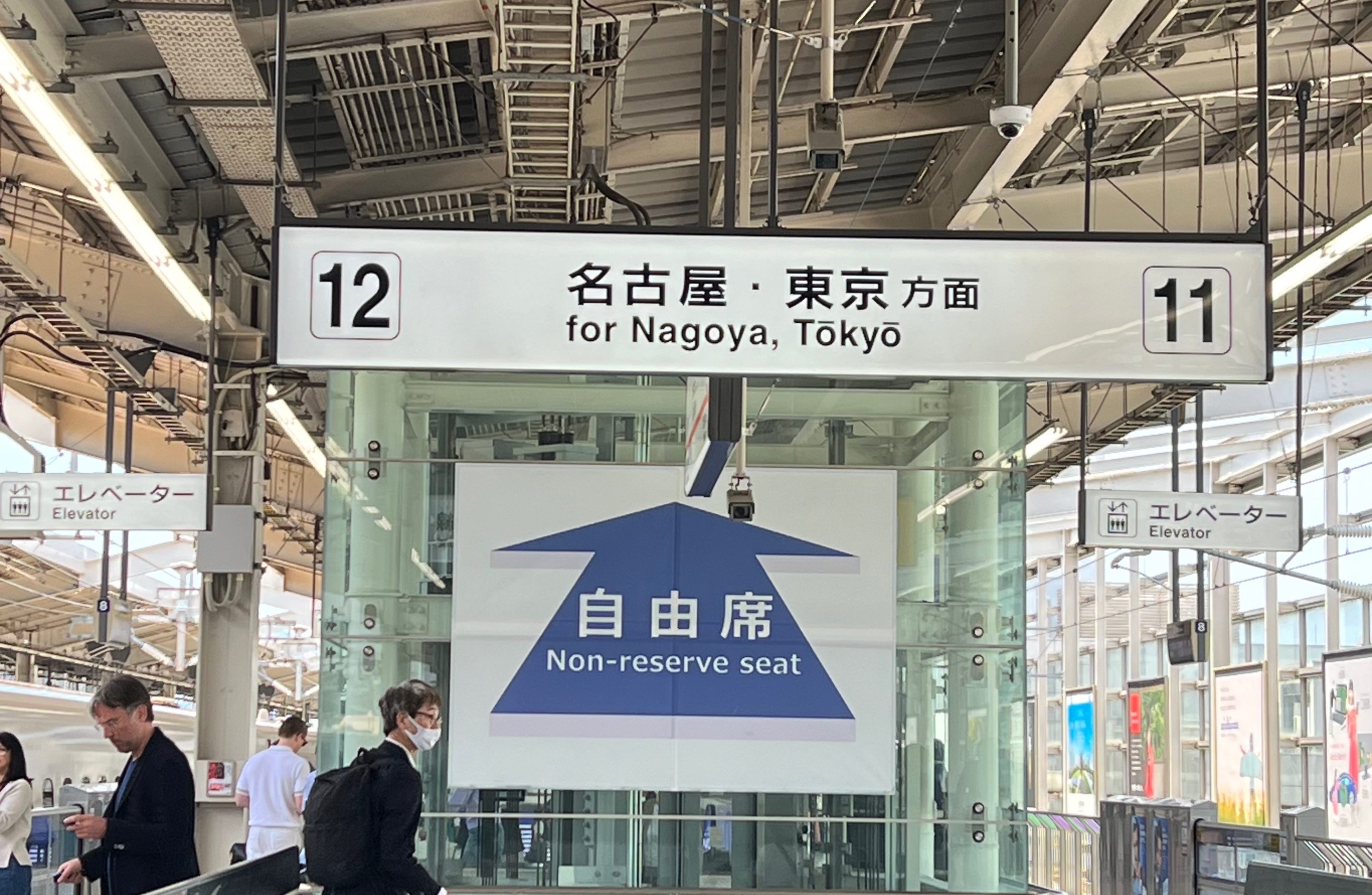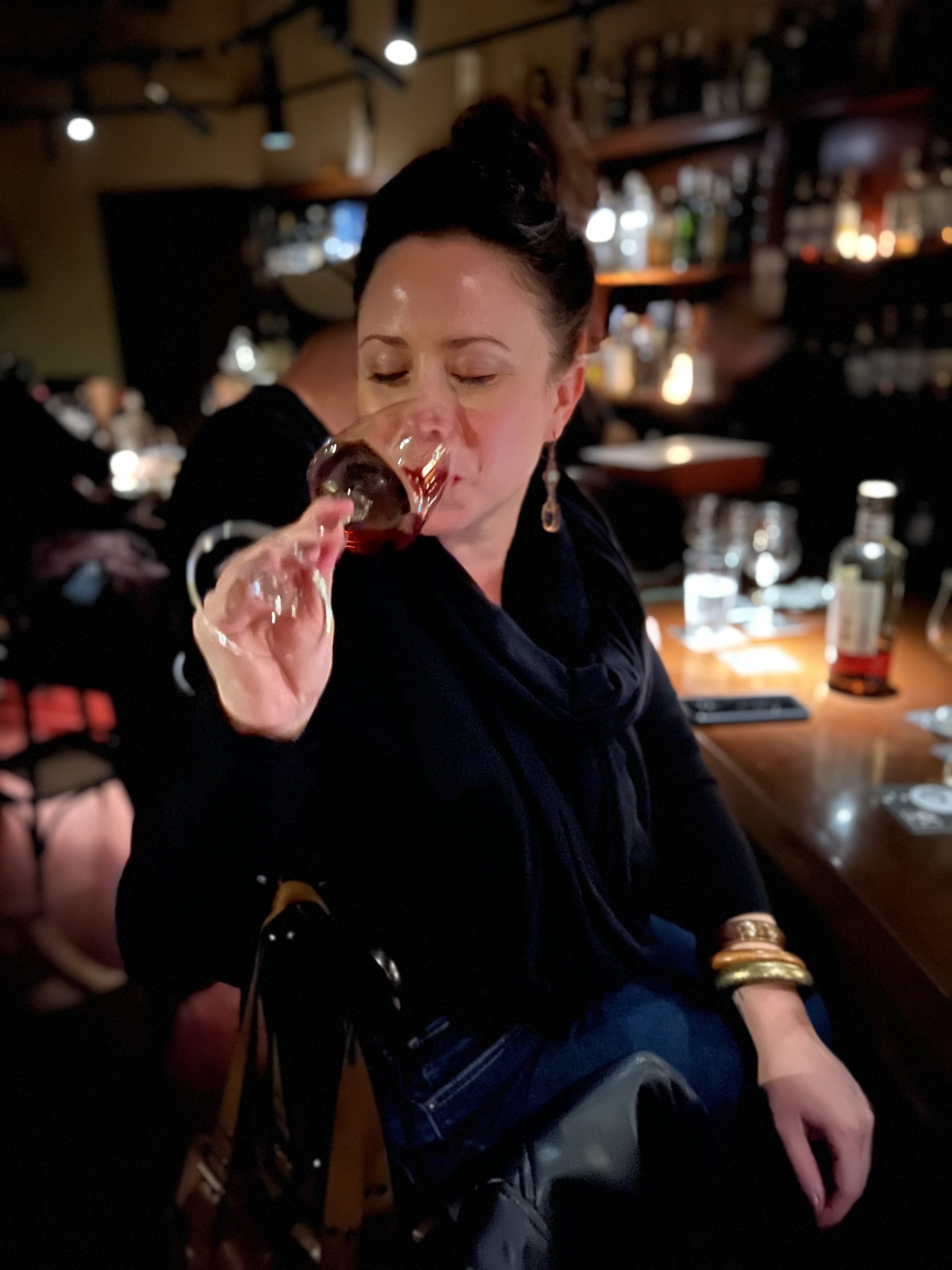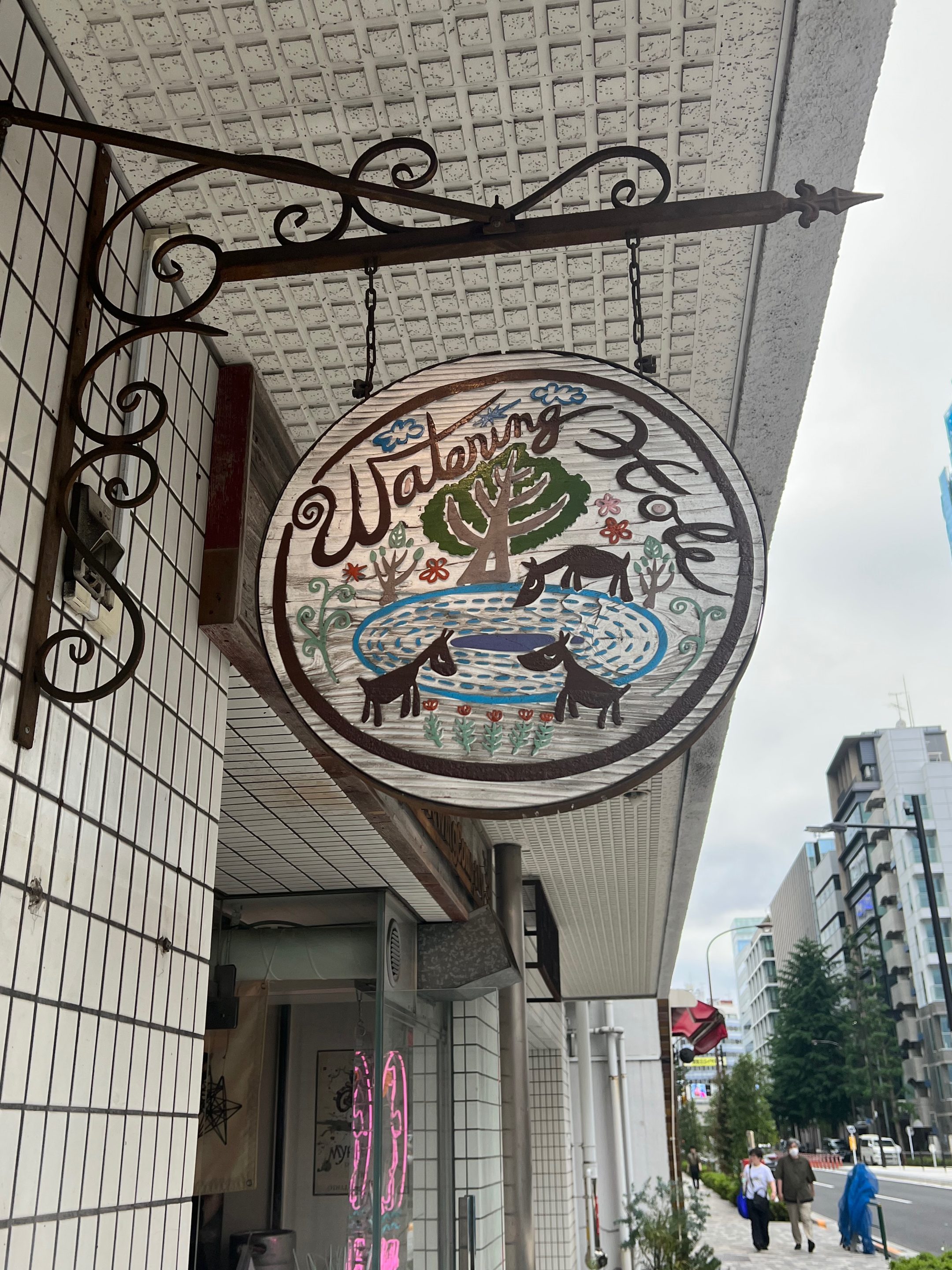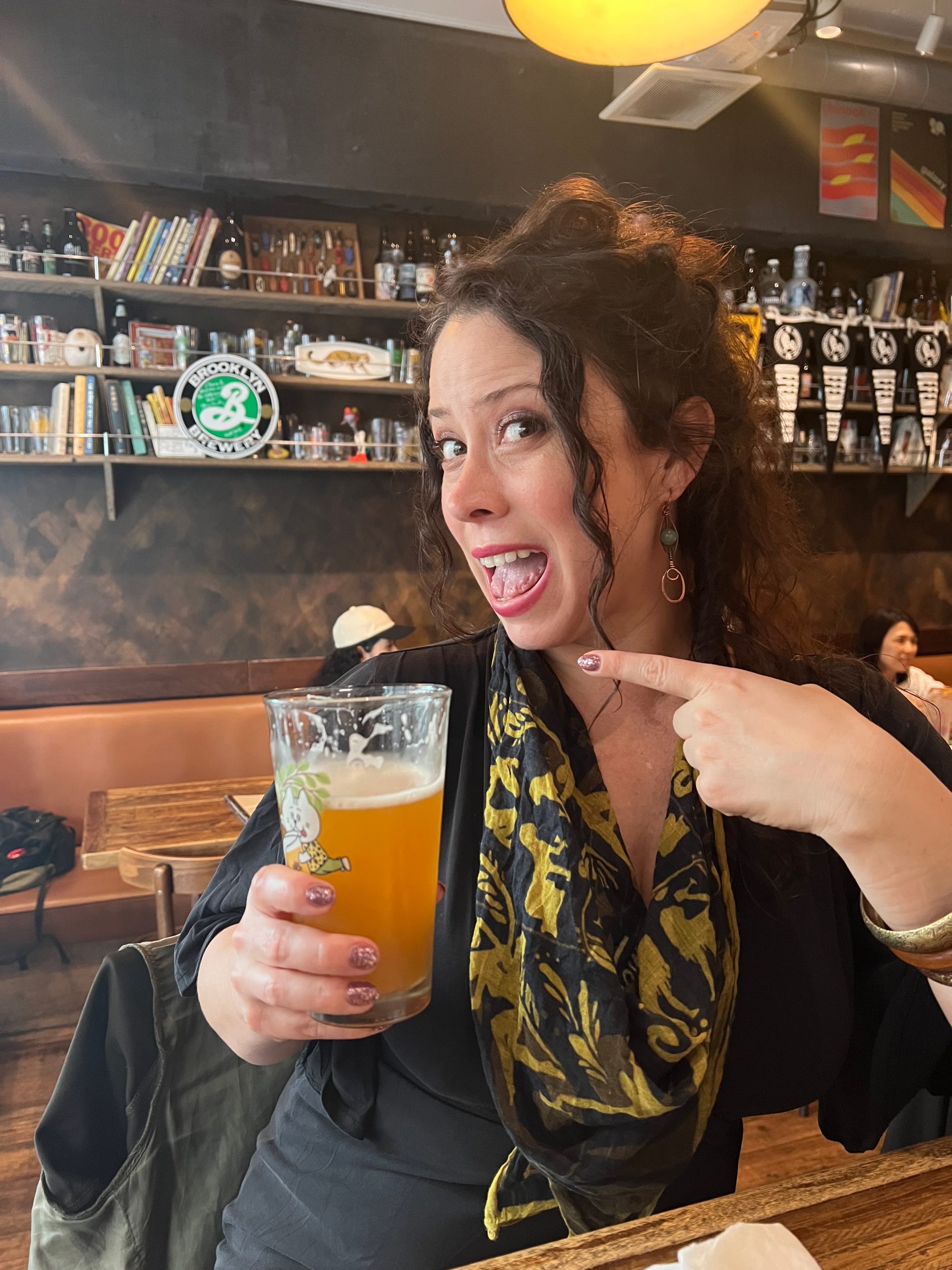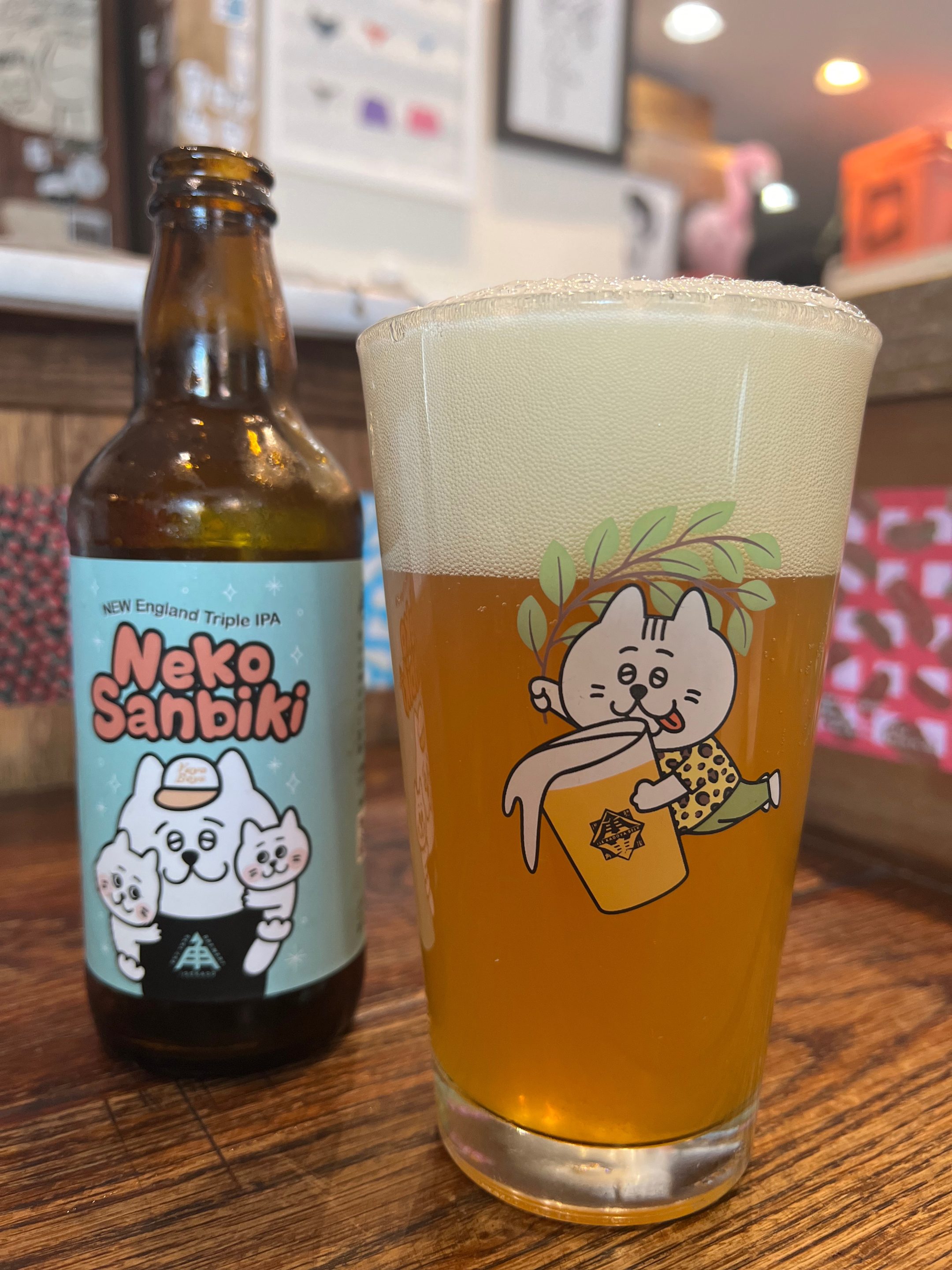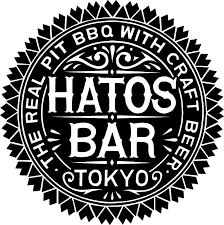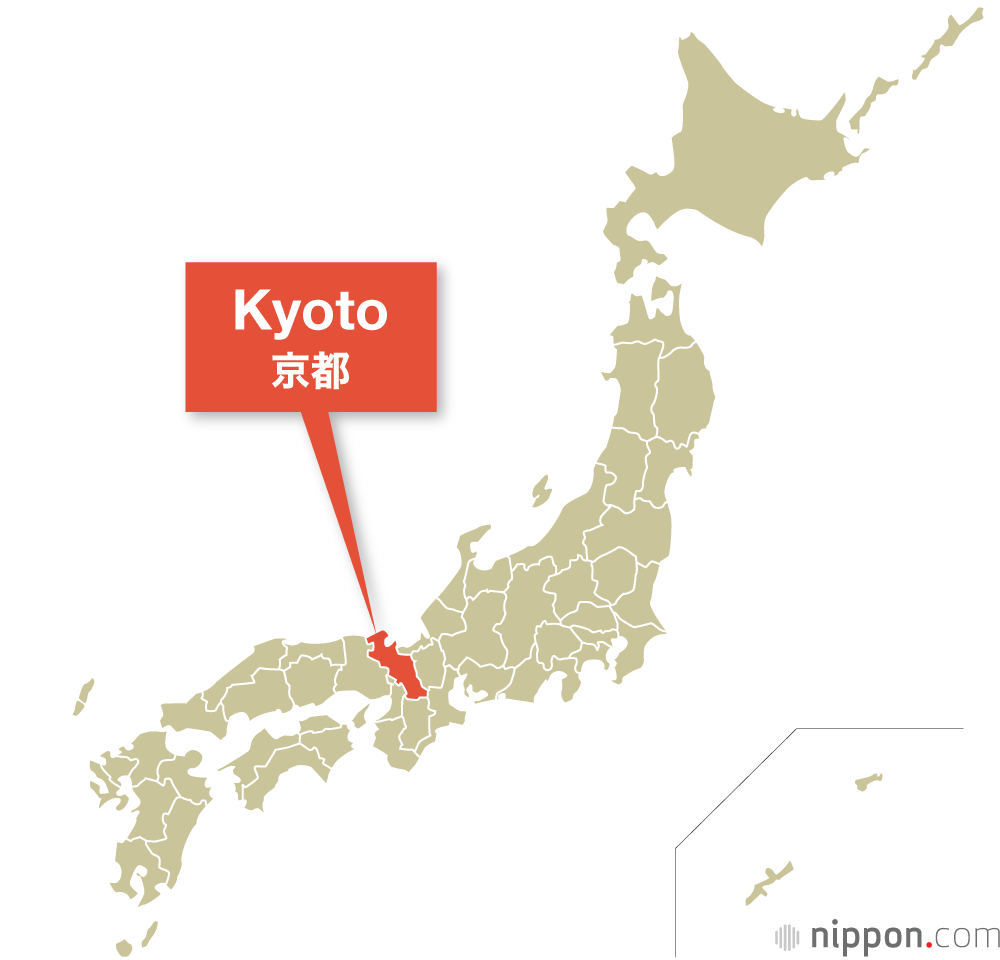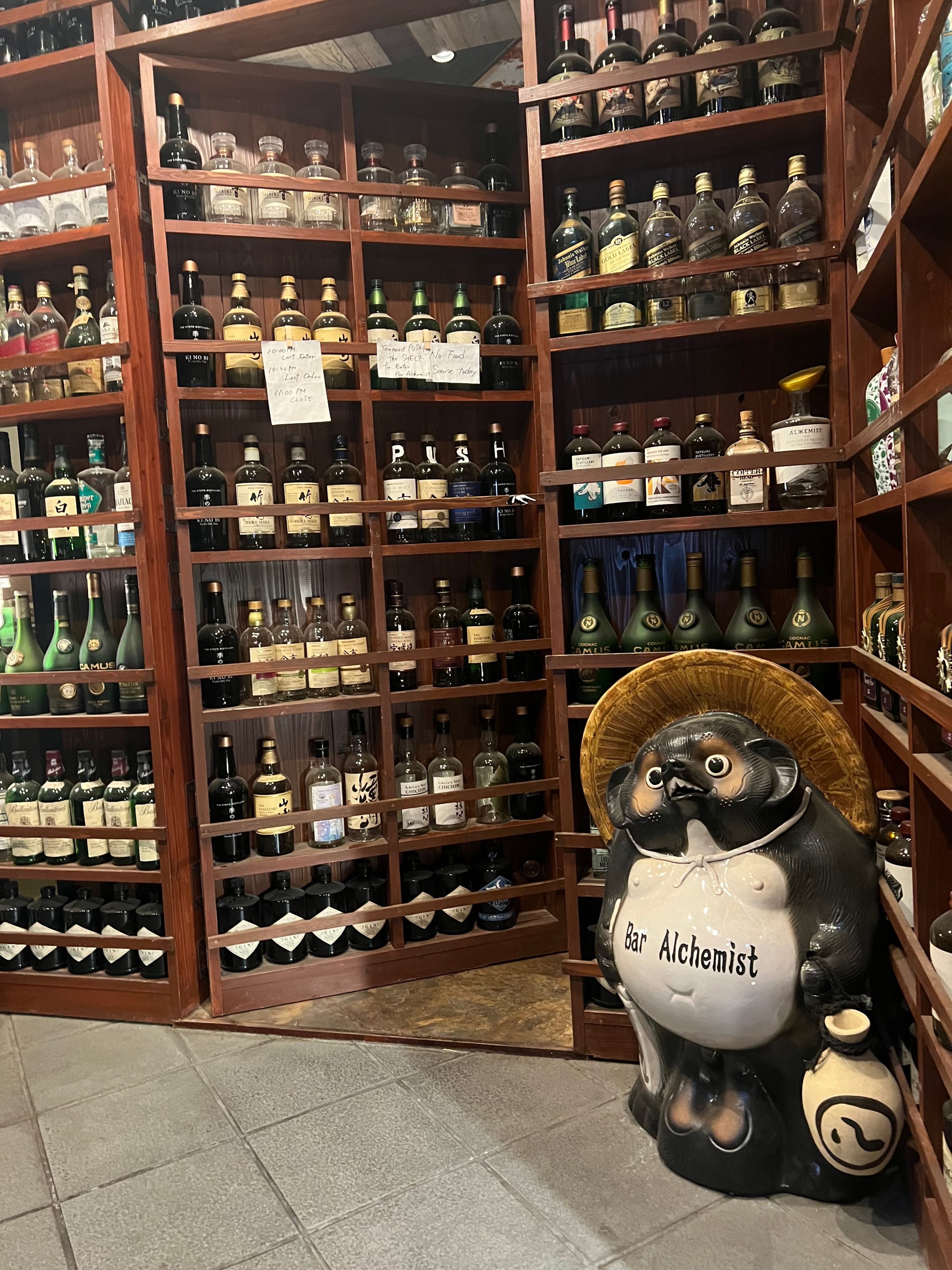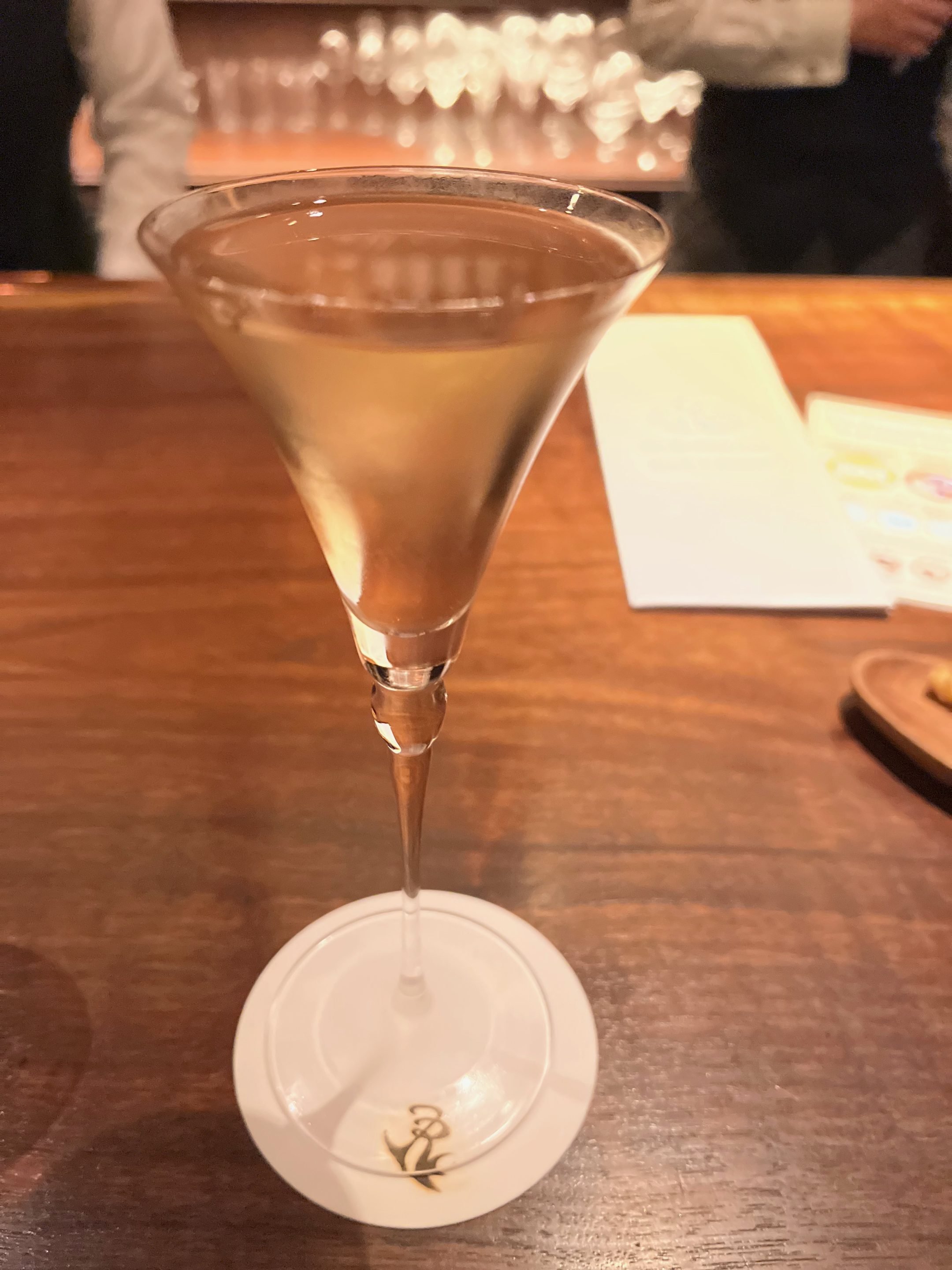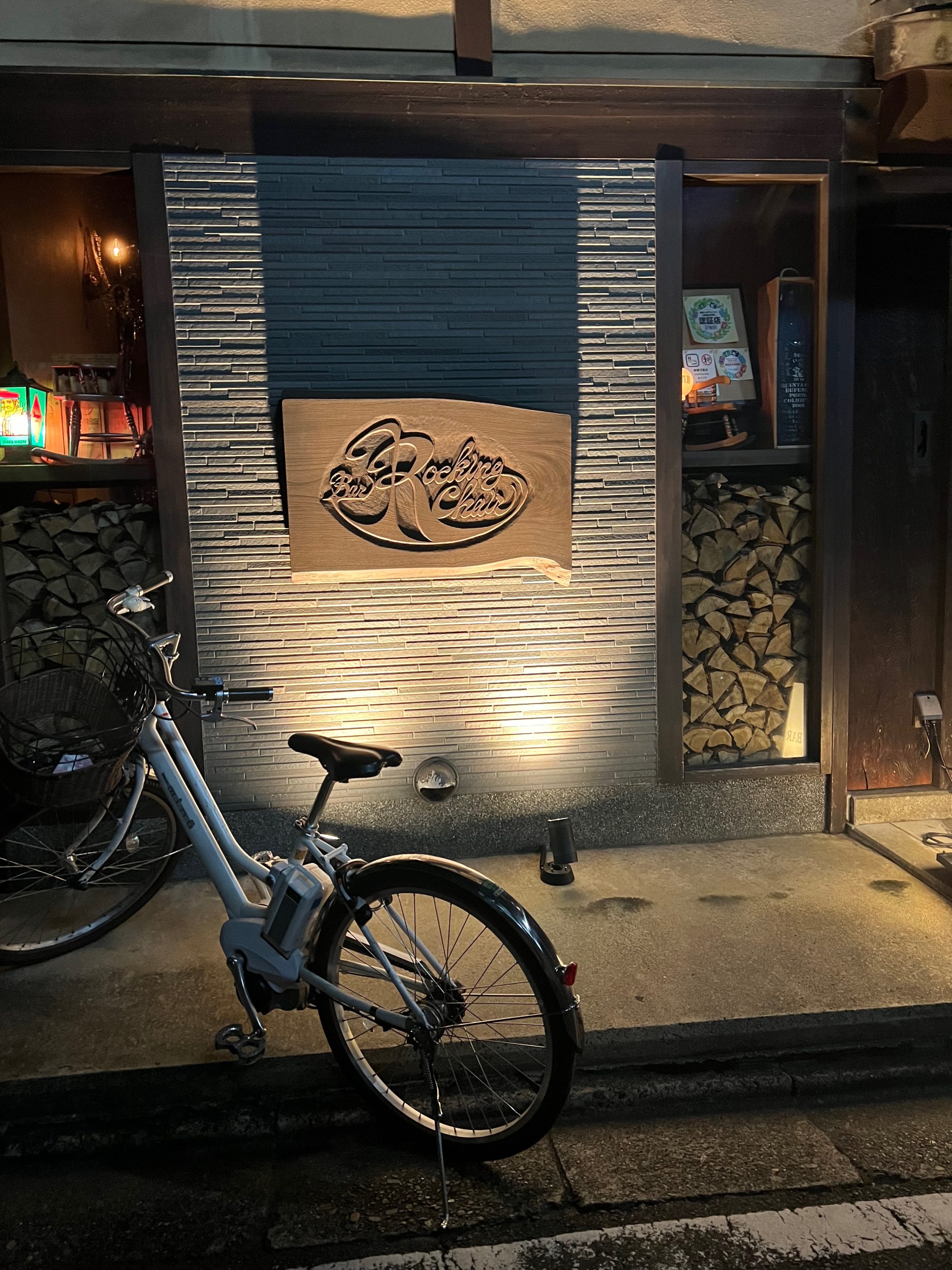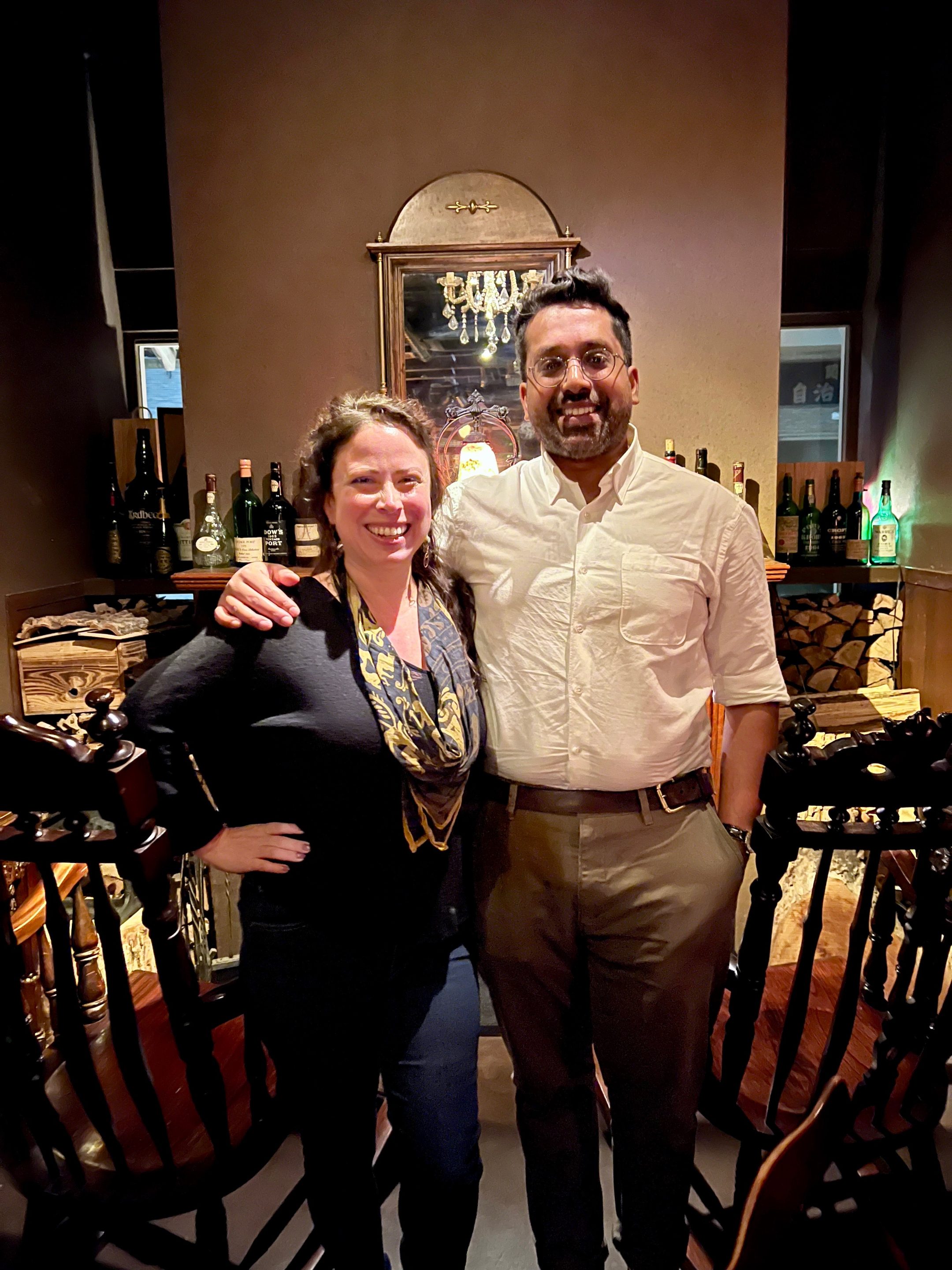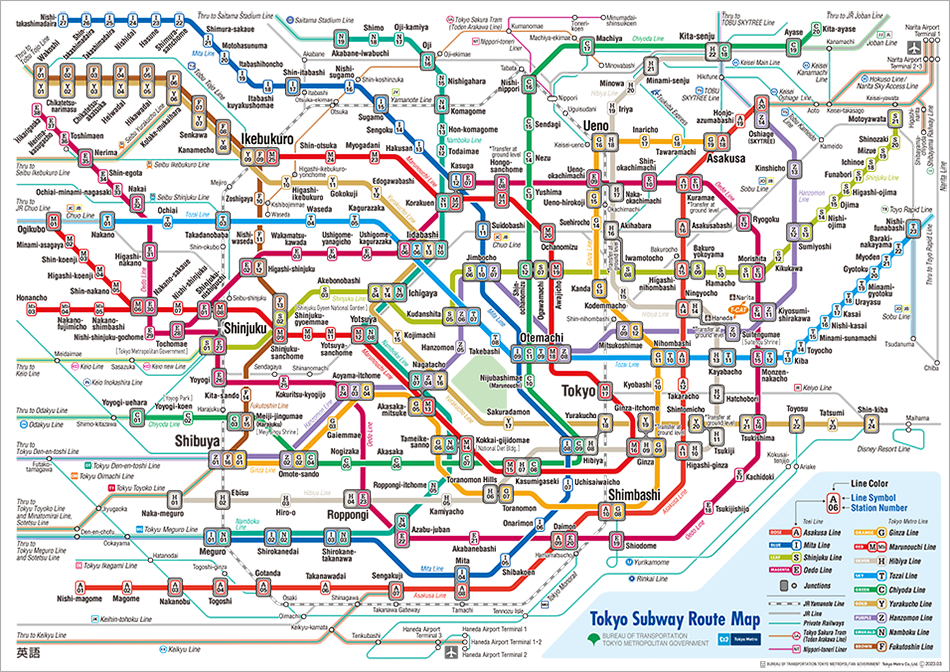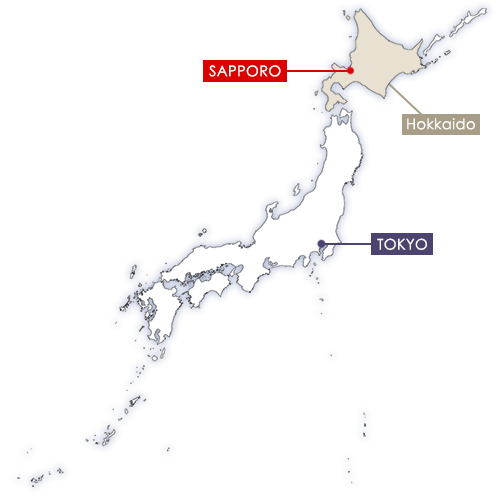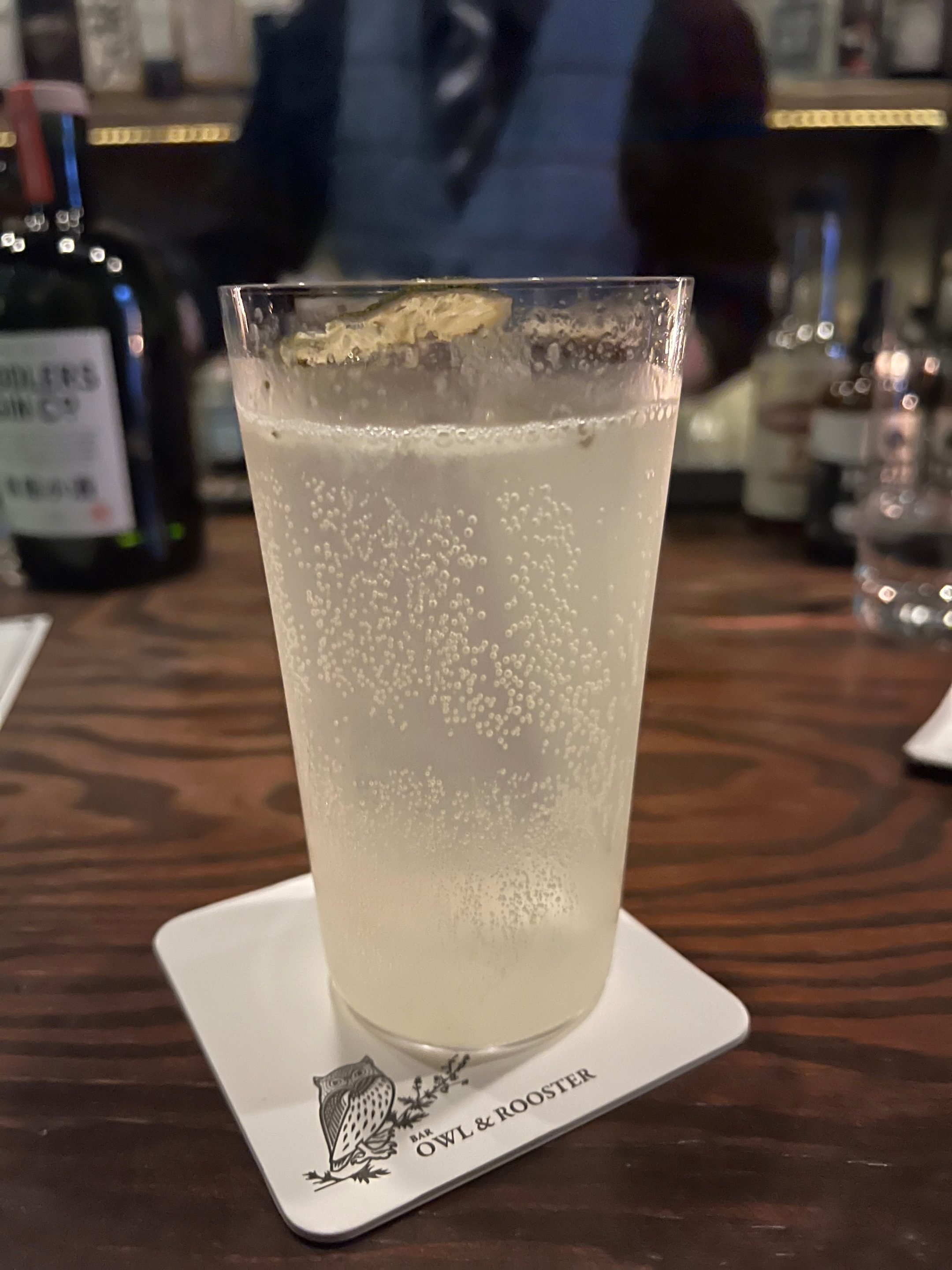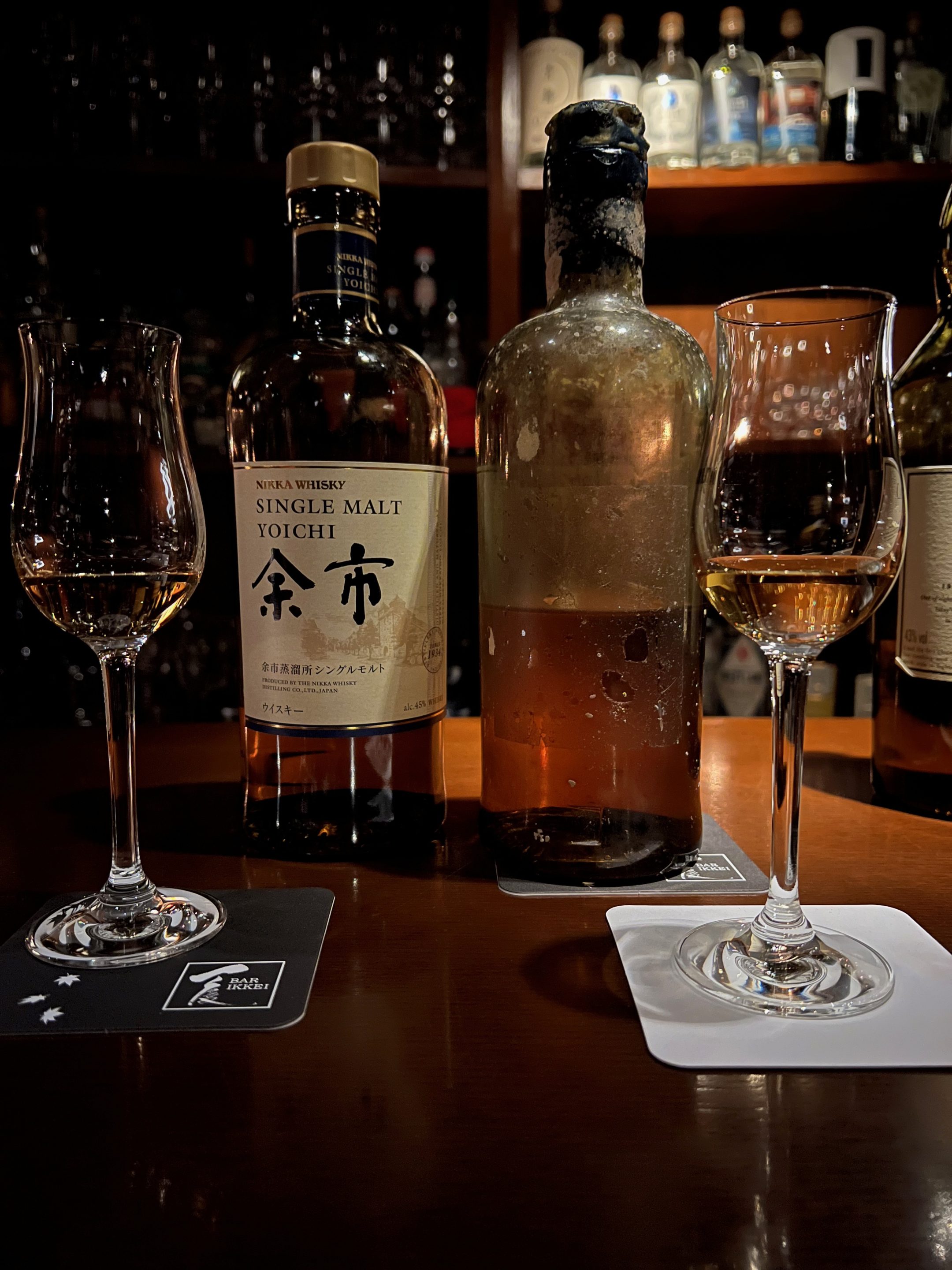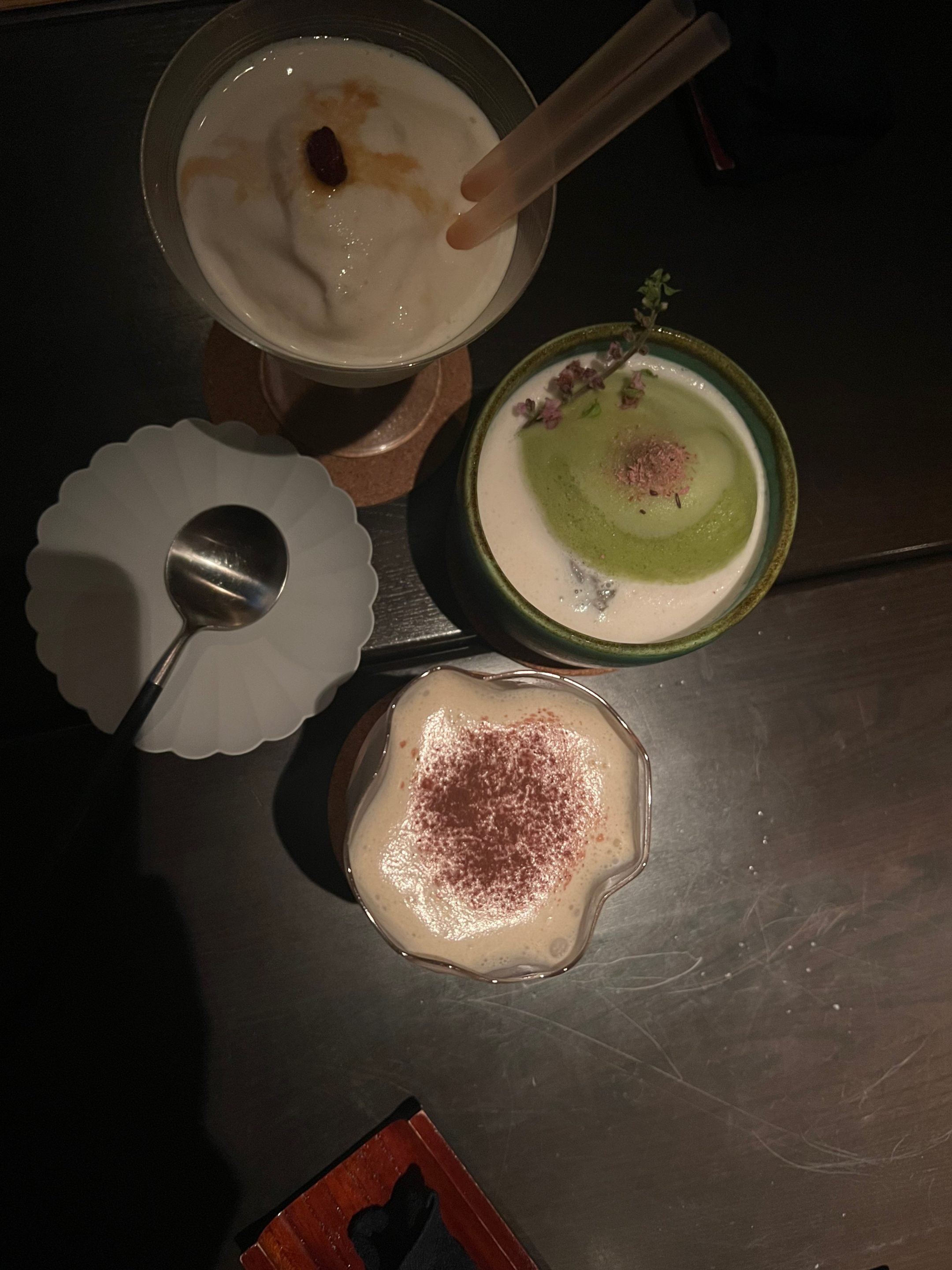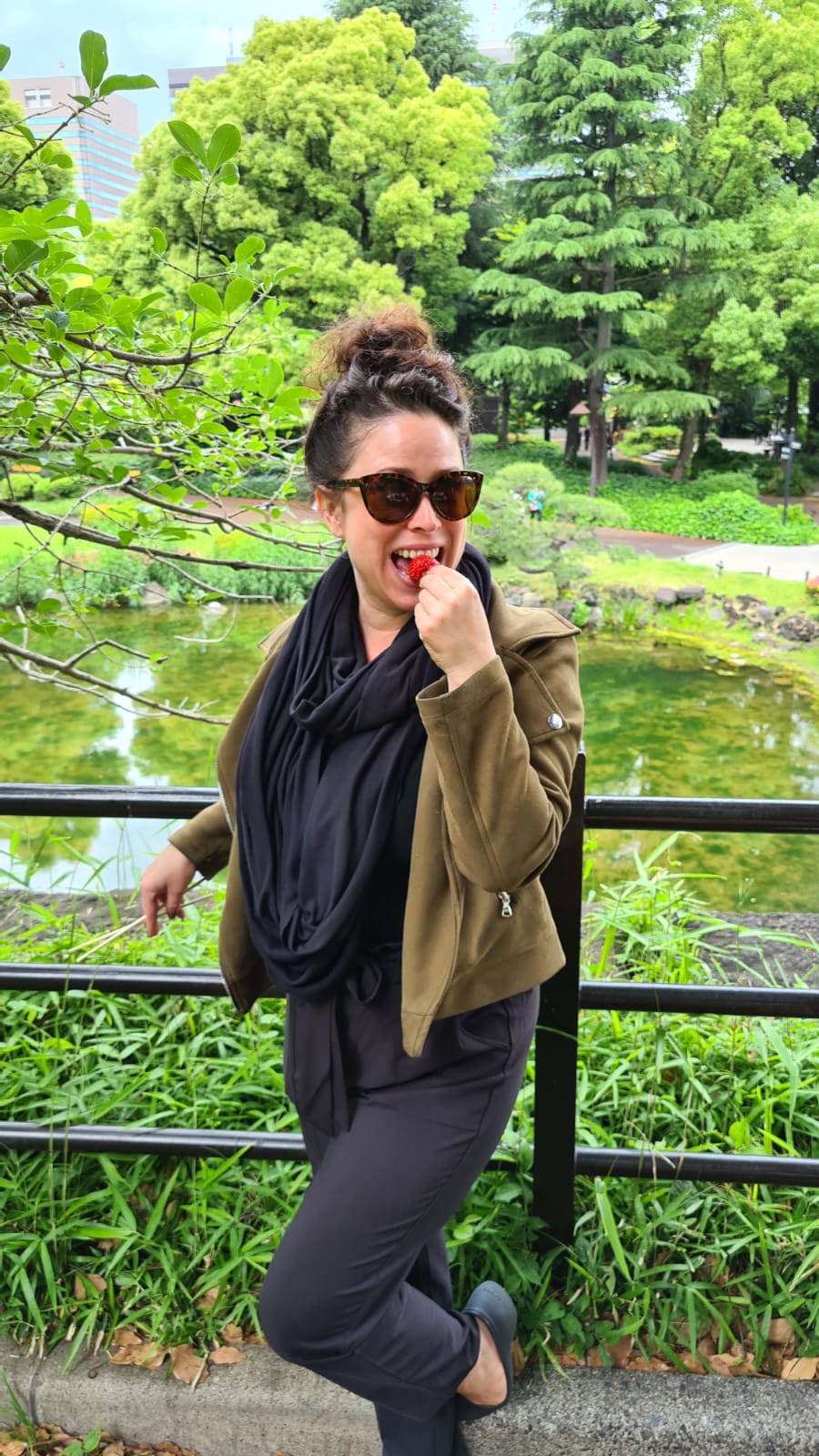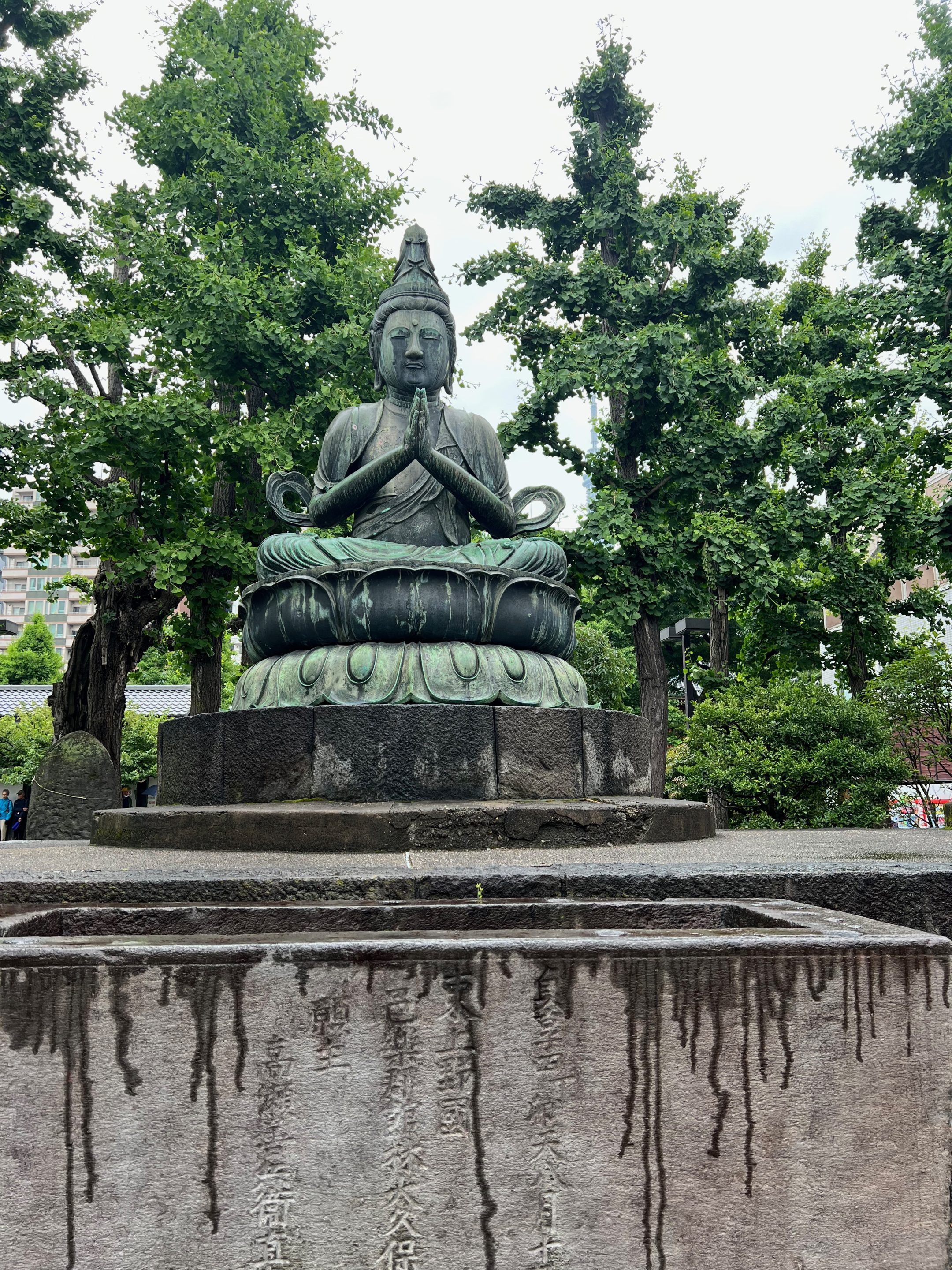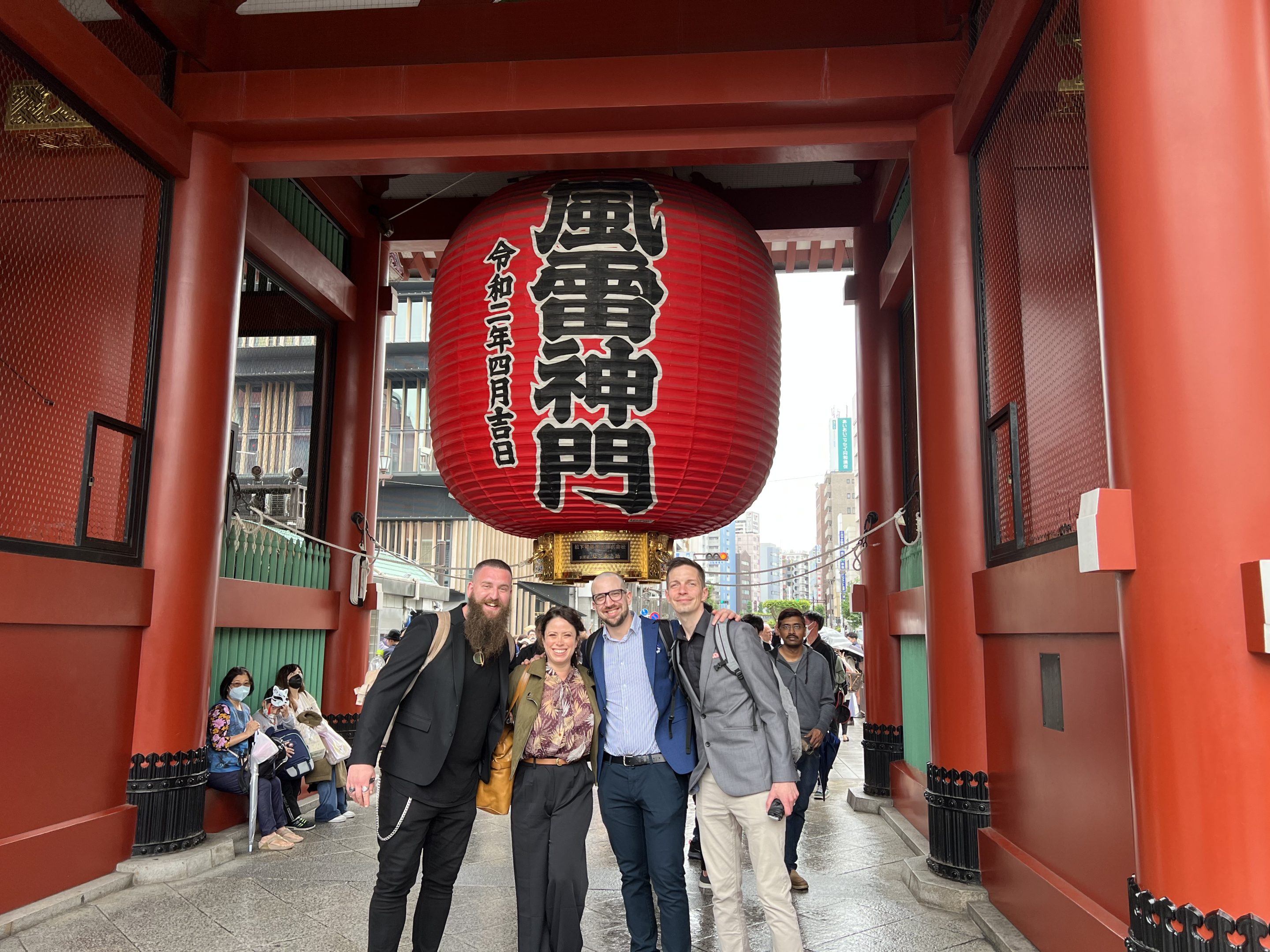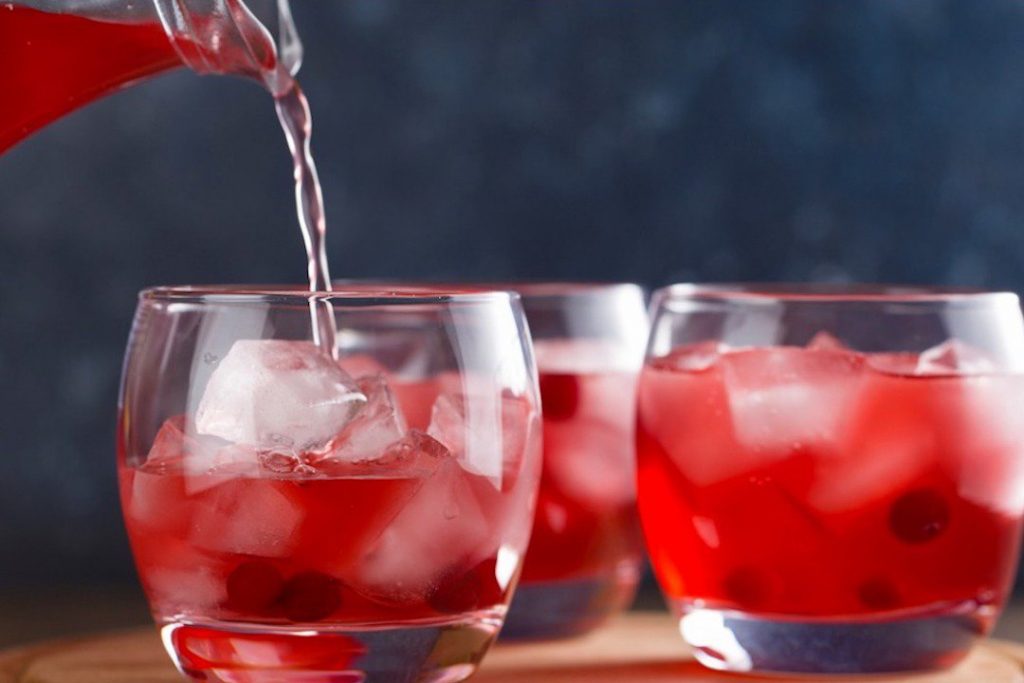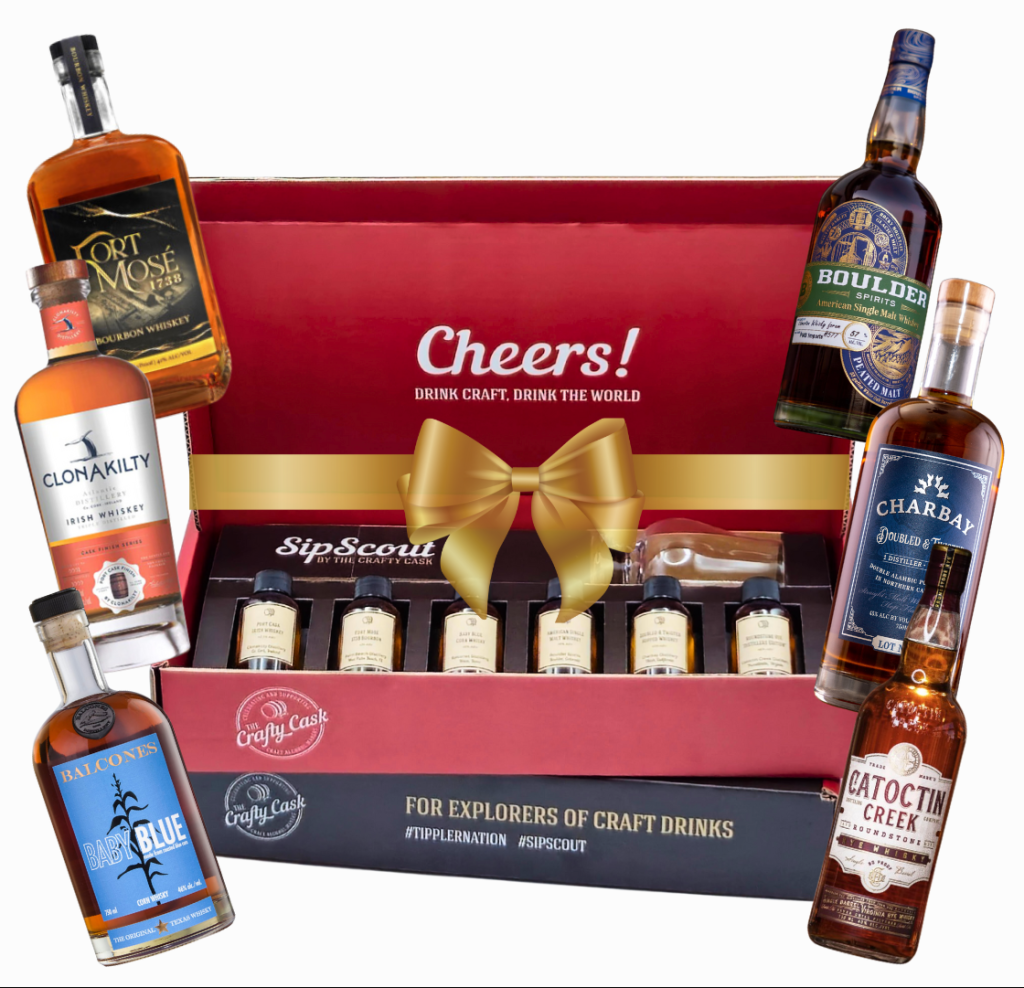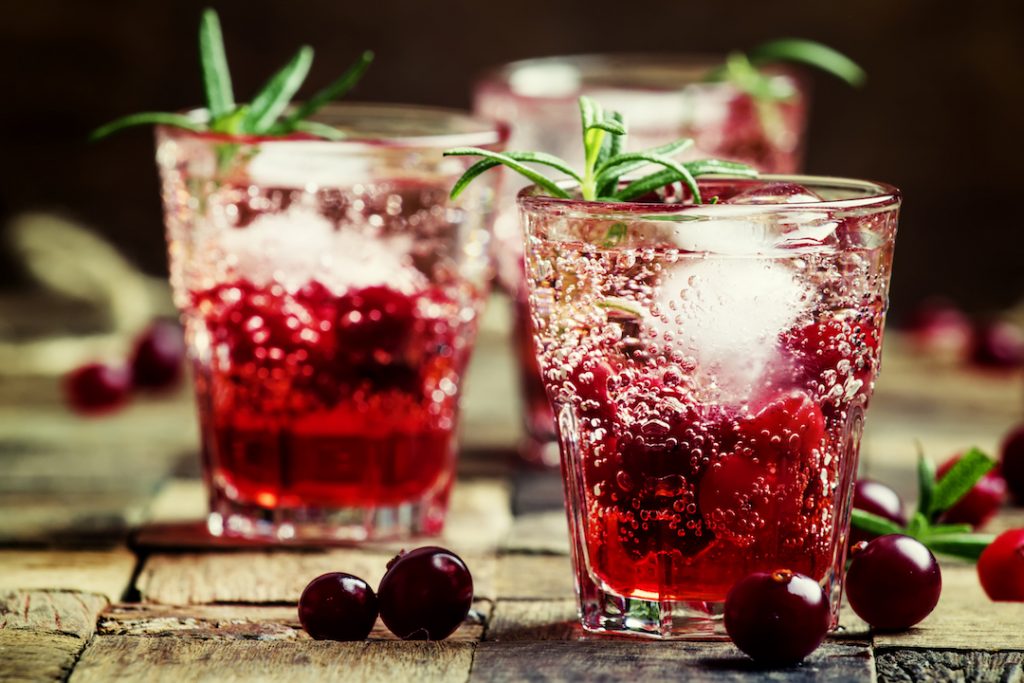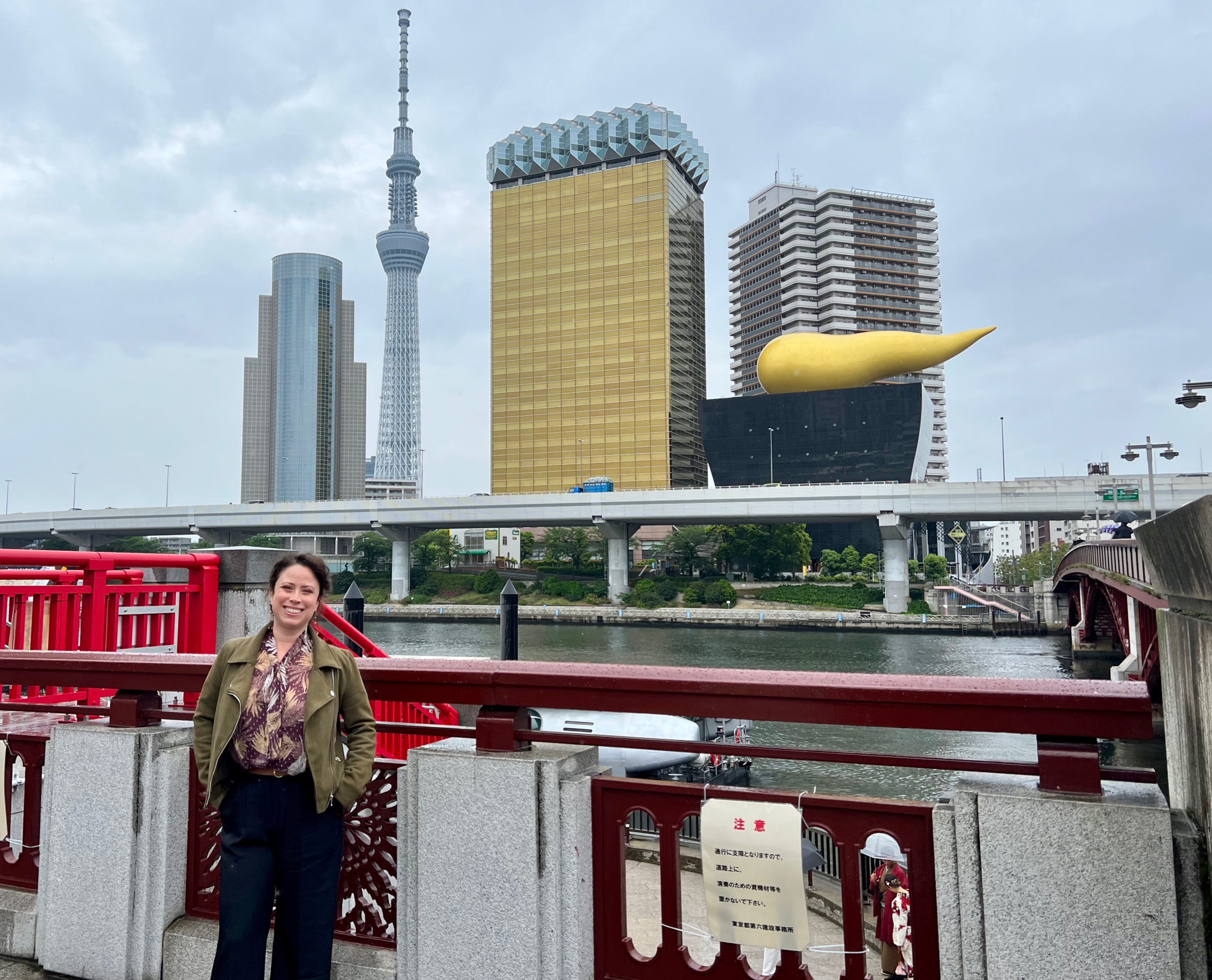
Fun fact: the tower behind me was constructed to look like a beer, it is home to the corporate offices for one of the most well known Japanese beers!
Konnichiwa!
Japan is known for many amazing and delicious things and, when you’re a booze nerd, that list increases exponentially: Sake, Shochu, Japanese whisky, carefully crafted cocktails, but what about Japanese beer? Go ahead, name a Japanese craft beer you’ve had stateside…we’ll wait..
Ok, maybe you’ve had one but can you name two?
Did you know the Japanese craft brewing scene is a relatively recent addition to the landscape of the country’s drinking culture?
Lucky for you I not only spoke to some amazing experts on the subject, I went to the Land of the Rising Sun to experience Japanese bar culture firsthand! Dou itashimashite!
From Japanese beer bars, to award winning cocktail bars, whisky distilleries, food markets, amazing sushi restaurants, casual izakayas, to the Tokyo International Bar Show itself, I researched tirelessly. I was also severely jet-lagged and occasionally fueled by really delicious and affordable onigiri or egg salad sandwiches and Japanese craft beer from 7-Eleven (do not knock it til you’ve tried 7-Eleven in Japan, it’s a thing). Now grab your passport, don’t forget to hydrate, and buckle up for a seriously long flight!
Before You Go…
Research the social customs and prepare to be respectful and quiet. Like really quiet. Make sure any medications you pack are legal in Japan, most decongestants are not. Rid yourself of the American habit of eating or drinking while walking, and don’t even think about lighting up a cigarette in undesignated areas (many bars do still allow smoking inside). Turn the sound on your phone OFF. Much like visiting Norway, do not strike up conversations with strangers unless absolutely necessary and be quiet and mindful on public transit. There are arrows on the floor, follow them.
WEAR GOOD SHOES, YOU WILL BE WALKING.
Download maps and Google translate in offline mode so you have them no matter what (Translate tends to get a tad poetic and inventive without the internet, but it will get you kind of close to the point). Pack sunscreen. Have tattoos? Pick up tattoo covers if you plan on visiting any onsen. You are going to stick out as a Gaijin, which means you best be on your best behavior as this is a country where everything and I mean everything is all about respect. Get comfortable bowing instead of shaking hands.
You will wait in line. Lines are a thing and mean the bar or restaurant is worth it. Be patient and arrive early.
Do not put money in someone’s hand at a store or bar, place it in the tray on the table or counter. Make sure you take cash out, many markets do not accept cards.
Not all Japanese websites work in English, this is especially true of regional train lines. Speaking of train lines, look up each train station before you go–they are all massive, daunting to navigate, and have food and drink options aplenty. You want to buy food for long train rides FYI. If you are booking a bullet train from Kyoto to Tokyo (or vice versa) book seat D/E to see Mt. Fuji in either direction as the seats FLIP, the train does not turn around.

What about bar etiquette?
“In Japan, there are many unwritten rules,” says Yas Kawakubo of Bulgari Ginza Bar, “so it may be initially confusing. However, if you behave with the mindset of visiting a dear friend’s house, you should not encounter significant issues. Of course, this is assuming that you are not the type of person who would help themselves to a precious bottle of whisky without permission at your friend’s house.”
“Most Japanese bars are very small and independent, and naturally like speakeasy bars,” adds Takuya Itoh of Small Axe Inc., “Usually they don’t have menus. They serve classic cocktails like Dry Martini, Manhattan etc… but most guests are having whisky. We don’t have tipping culture and instead of it, we have cover charges in night time businesses like bars and izakayas.”
The cover charge or “hospitality fee” also includes a small snack and a warm towel to refresh your hands, the entry price will be posted in the entrance, usually along with their policy on taking photos.
It is polite to pour Japanese beer, sake, water, or any other beverage for those around you and wait for them to pour for you.
A Little History on Japanese Brewing
According to the Brewer’s Association of Japan (est. 1953), beer was first brewed in Japan by a Dutch doctor in 1853. The first Japanese brewer, Syozaburo Shibutani, began brewing and selling beer in Osaka in 1872. By 1876 the first Japanese brewery owned by the government was established in Sapporo, Hokkaido, a region rich in hops. Yes, one of the most well known Japanese beers is named for the area. In 1901 the first Beer Tax Law was introduced and, by 1940, the minimum quantity of beer to obtain a manufacturing license for a brewery was increased from 180Kl to 1,800Kl. A number which continued to increase as time went on… all the way up to 2,000Kl by 1959.
No wonder we didn’t see any Japanese craft breweries, it was financially impossible for the little guys to operate! The minimum production quantity didn’t drop until 1994!
Oh and homebrewing? Yeah, still not legal today.
“The craft brewing scene in Japan has evolved significantly since the legalization of craft beer production in 1994 through amendments to the liquor tax law, ” Yas-San points out, “Initially, from around 1994 to the early 2000s, it remained a niche trend enjoyed only by a small group of enthusiasts. During this time, it was referred to as “Ji-biru 地ビール” or “local beer,” with breweries like Echigo Beer and Hitachino Nest Beer gaining popularity. However, around 2010, there was a resurgence of interest, particularly in styles like IPA, and the term “craft beer” started to gain prominence. Currently, there are nearly 700 breweries across Japan. While the pandemic led to the closure of many craft beer bars, people have developed a habit of purchasing craft beer from convenience stores and enjoying it outdoors. For example, in Yokohama, a 7-Eleven offers around 300 varieties of craft beer for purchase. This shift in consumption habits has allowed Japanese craft beer to remain accessible to enthusiasts even during challenging times.”
Looks like I was on to something with my 7-Eleven purchases….
Japanese Beer Bars: Tokyo
Located in Shibuya, this rad little pub was opened in 2012 by Ichiri Fujiura and Michiko Tsutsui. That name sound familiar? 1998, Fujiura-San was the first—and still one of the few—non-Americans named Homebrewer of the Year by the American Homebrewers Association. Kind of a major feat considering homebrewing in Japan wasn’t and isn’t legal… their collab Japanese craft brew label YuYa Boys is available in the pub and is f-ing delicious. It also has cats on the label so of course I was going to snag a few.
I would 100% hang out here if I lived in Tokyo and it looks like other craft beer nerds agree: there are stickers from Finback (how the heck?! But also yay Queens!) and cans available from Other Half , drafts from all over, and signage from Brooklyn Brewery. Did I even leave NYC, ya’ll?
How Do I Ask For A Beer?
O-negai Shimasu Biiru Kudasai!
When ordering anything, it’s important to be polite! The above phrase translates to “please may I have a beer please” and is extremely useful when it comes to Japanese beer and bar etiquette. Sumimasen is another phrase you should get comfortable using, it will come in very handy.
Itoh-San’s choice for a Japanese beer bar, Hatos bar is one of the craft beer bar pioneers in Daikanyama ,Tokyo. “Its BBQ food and international creative vibes are amazing!”
Hatos boasts a great music scene (and disco ball) in addition to their suds and grub, with the staff taking turns updating the playlist. Their craft beer list rotates frequently and, like most spots in Japan, this beer bar is tiny so make a reservtion or prepare to wait.
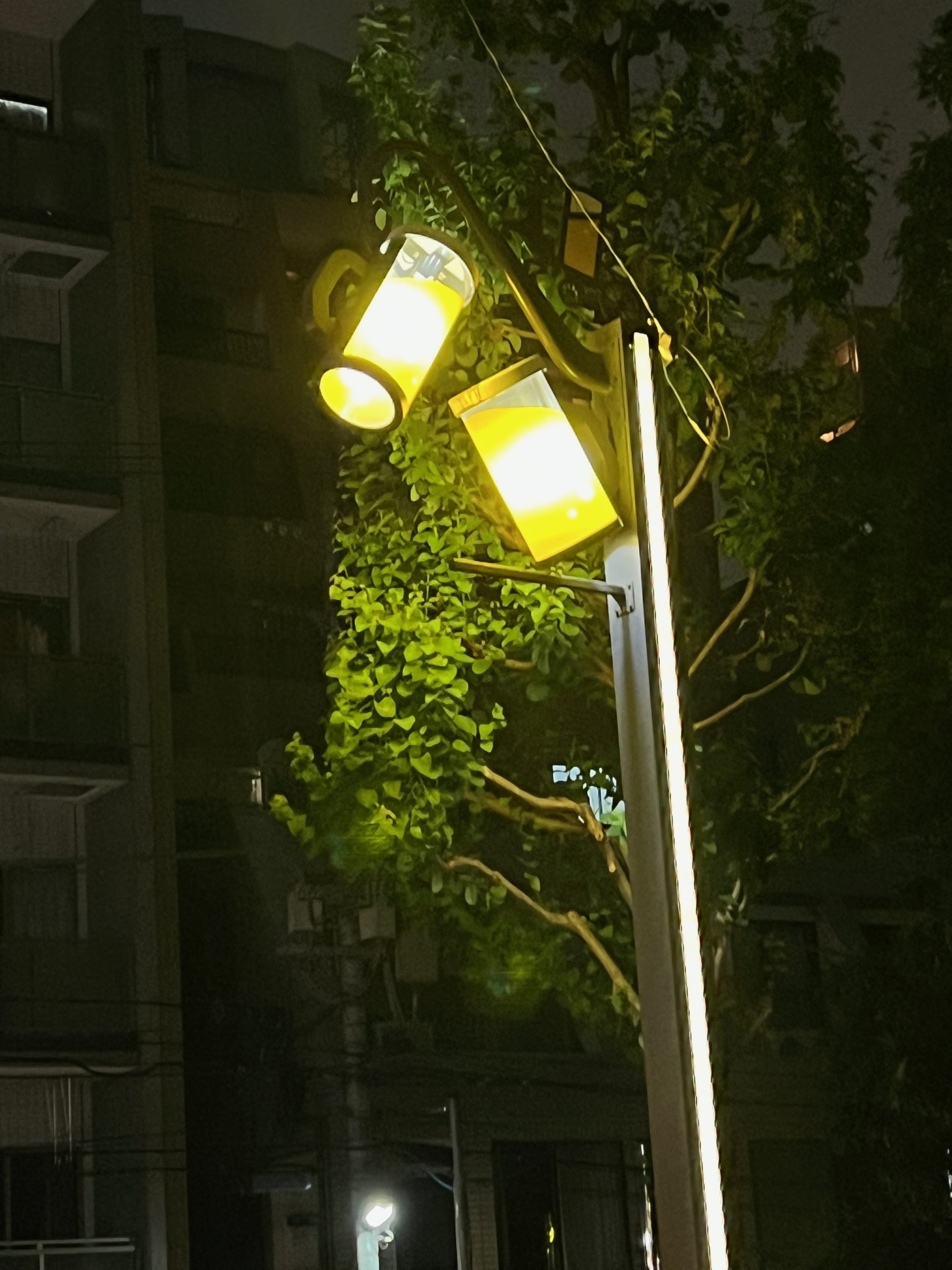
“Beer Club Popeye, located in the Ryogoku area, is the most famous craft beer bar and my personal favorite,” says Yas-San, “It has been known since 1985 as a bar that serves beer in its finest condition, even before the trend of Japanese craft beer began. You can enjoy a selection of 70 beers on tap at all times. It is also recommended to international visitors as the famous sumo arena is nearby.”
In Beer Nerd Fun Facts: beer writer Michael Jackson visited Beer Club Popeye four times!
The Art of the Japanese Cocktail
“Tokyo as an international city, there has been a proliferation of bars in recent years that incorporate trends from Europe and the United States. Within the 23 special wards of Tokyo, there are approximately 500 train stations, and each station area has its own unique bar trends. Outside of Tokyo, classic-style bars still dominate, and the true essence of “Japanese Bartending” remains intact there.”- Yas-San
I spent a few days falling deeply in love with Kyoto, even if I was *almost* asked to leave one of its most famous cocktail bars. Remember when I told you to get used to being quiet? I was completely serious…and I was doing a really great job of keeping my volume down until I ran into one of my personal bar heroes for the first time in person and he recognized me. Of all the gin joints in all the world, Ryan Chetiyawardana and I both were enjoying the fabulous cocktails and hospitality at Bar Rocking Chair! Kenji-San and his team craft stunning libations served in the most beautiful glassware, I could’ve stayed all night (once I got my excitement and volume contained).
On Evan’s recommendation, I headed over to Bar Alchemist , and had a lovely time chatting with the staff and checking out their rad decor and action figure collection. I was especially intrigued by the lone tomato in the fruit display and, when I asked, Tomohiro-San told me it was for fresh Bloody Marys!
Other Kyoto cocktail bars not to be missed: Bee’s Knees, where Toru-San is mixing up inventive twists on classic speakeasy cocktails and Bar Ixey, where aroma is everything.
Full disclosure: my experts on Japanese beer happen to be award winning industry professionals who run some of the best bars in all of Asia. They are also really cool dudes and they are based in Tokyo.
“My first bar “Bar Paradiso” was influenced by independent cafes in 90’s Seattle,” Itoh-San muses, “I visited a lot of unique cafes open late, like 3~4am at that time. I was very young and I felt that most bars in Tokyo were for older and established people. Some cafes had nice characters but the quality and selection of alcoholic drinks were not good enough. I thought I should make a place I couldn’t find in Tokyo.”
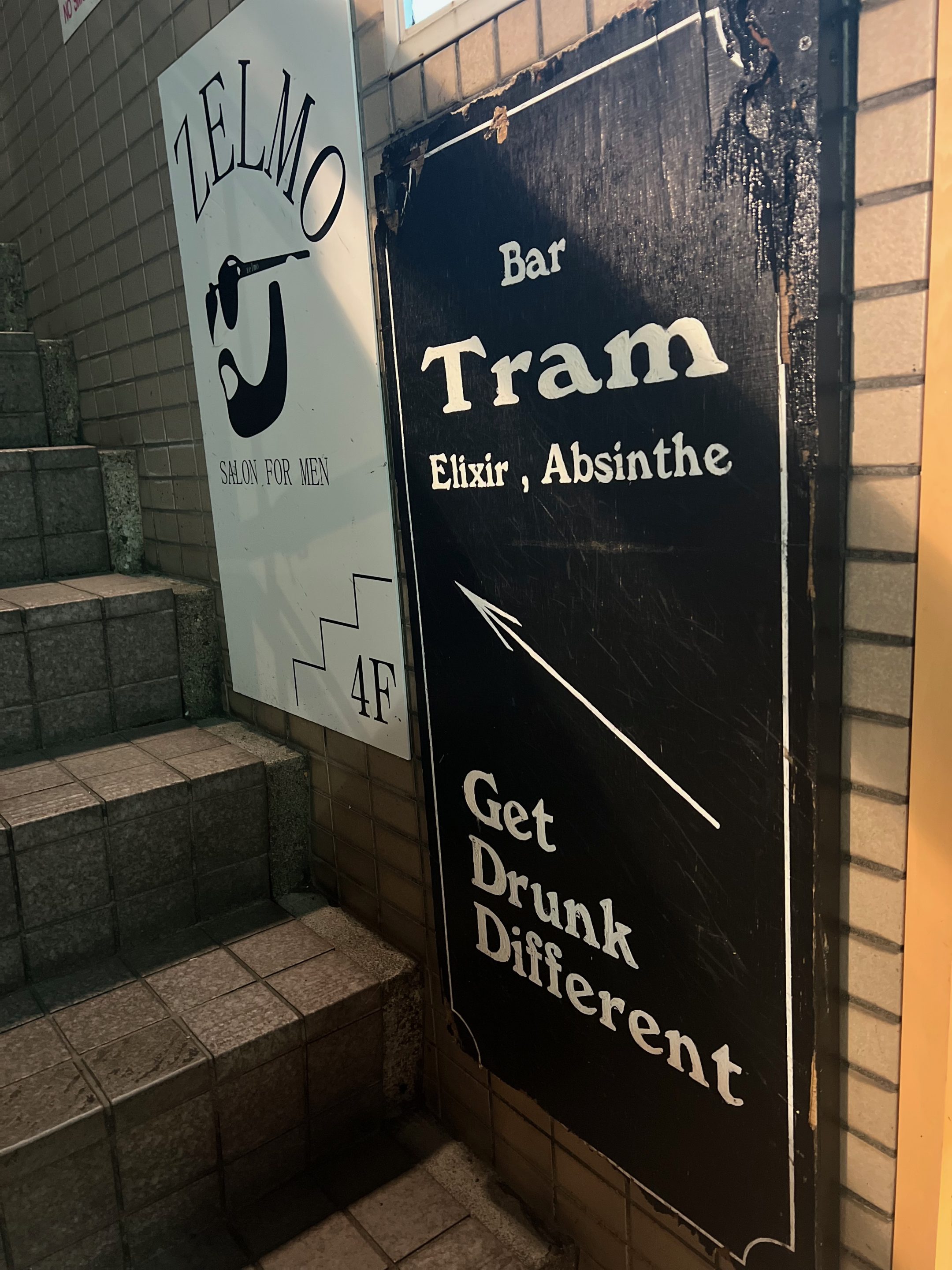
Itoh-San founded Small Axe Inc. (yes, it’s named for the Bob Marley song) which is comprised of Bar Tram, a bar with a focus on on Absinthe and craft cocktails, that has been introducing elixir, amaro, and herbal liqueur to Tokyo for 20 years. Bar TRENCH, headed by one of my favorite humans to be around, Rodgerio Igarashi Vaz. Seriously, it is impossible to NOT smile around Rodgerio-San. TRENCH highlights impecable cocktails but don’t take my word for it, Rodgerio-San and his team have been listed as one of Asia’s 50 best bars a whoppping 7 times! Bar TRIAD, the largest and liveliest (yes you can use full volume here) of the trio, focuses on modern craft cocktails for younger generations under the motto: “serving high-end quality drinks in a friendly atmosphere.” Did we hit all three cocktail bars in one night? Hai!
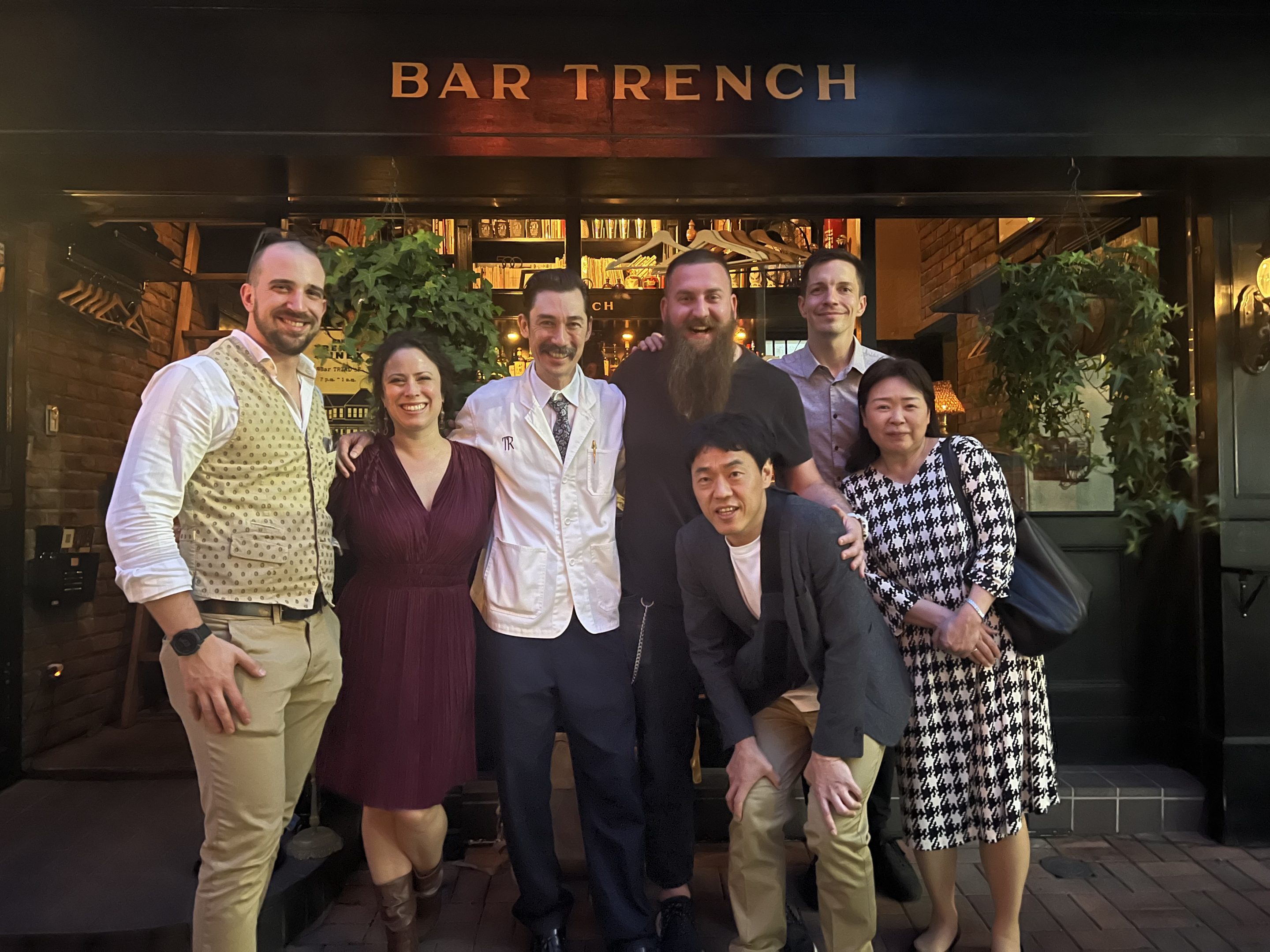
“When I was 15 years old, I was fascinated by cocktails,” remembers Yas-San, “I bought many cocktail books. Among them was “Cocktail Technique” by Kazuo Ueda from Tender Bar. In that book, I learned about the culture of bartenders interpreting and creating their own style of cocktails for each classic recipe. This inspired me greatly, and I made the decision to become a bartender.” After traveling and bartending all over the globe, he moved back to Tokyo where he runs the flagship bar for Bulgari in Ginza. The bar is stunning and working behind it (yes, I had a guest shift) was an absolute joy.
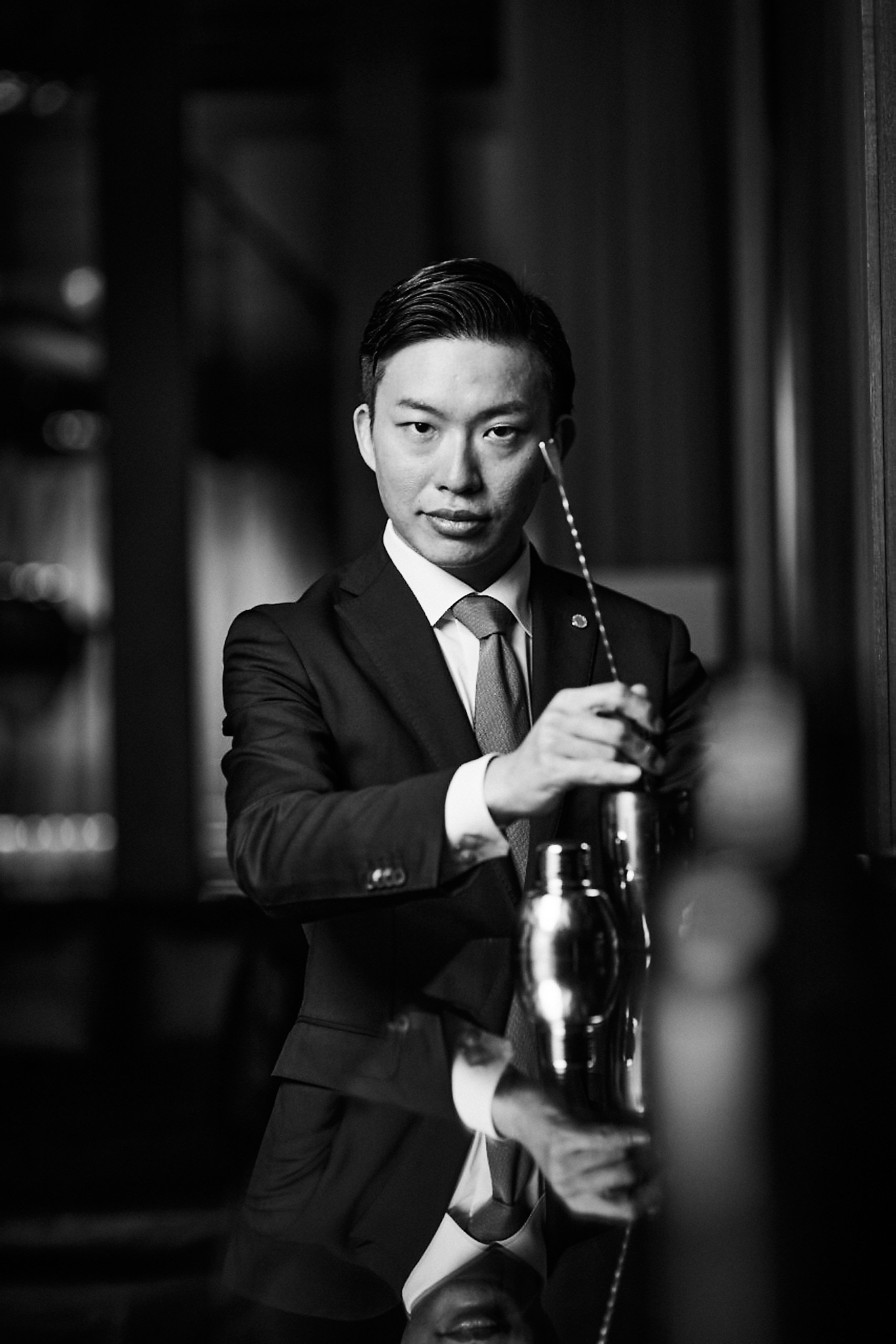
There are many amazing cocktail bars in Tokyo, and most of them are extremely small so make a reservation if they take them or go early to wait in line! I cannot stress this enough.
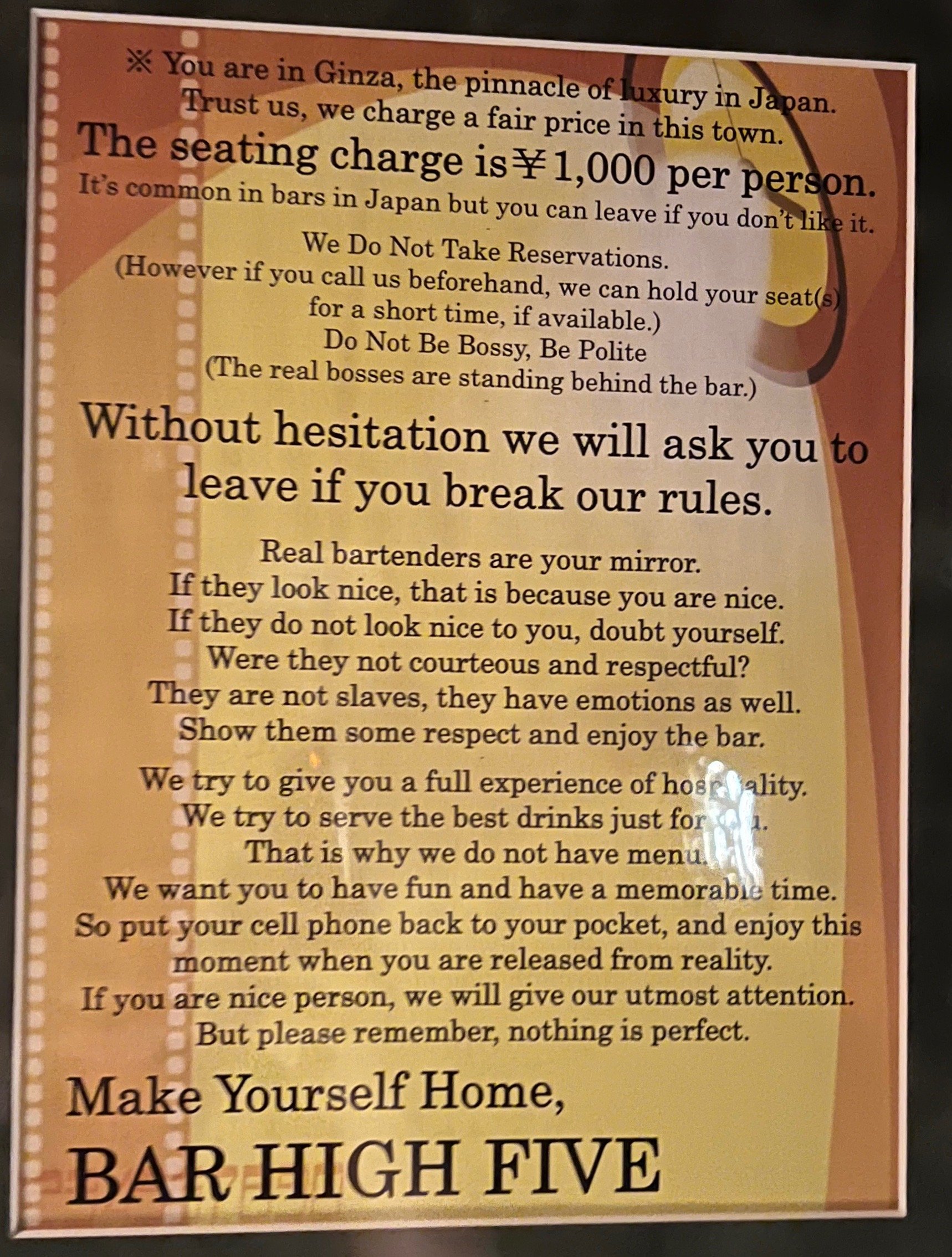
Intrigued by the Japanese cocktail shaking technique? High thee to Bar High Five to watch the Japanese hard shake in action! Ueno-San and his team are a joy to watch! The cocktails and hospitality were truly special (and they should be, this bar is also award winning) but I was especially moved when I saw Ueno-San begin washing the glassware, gently trading places with his support staff.
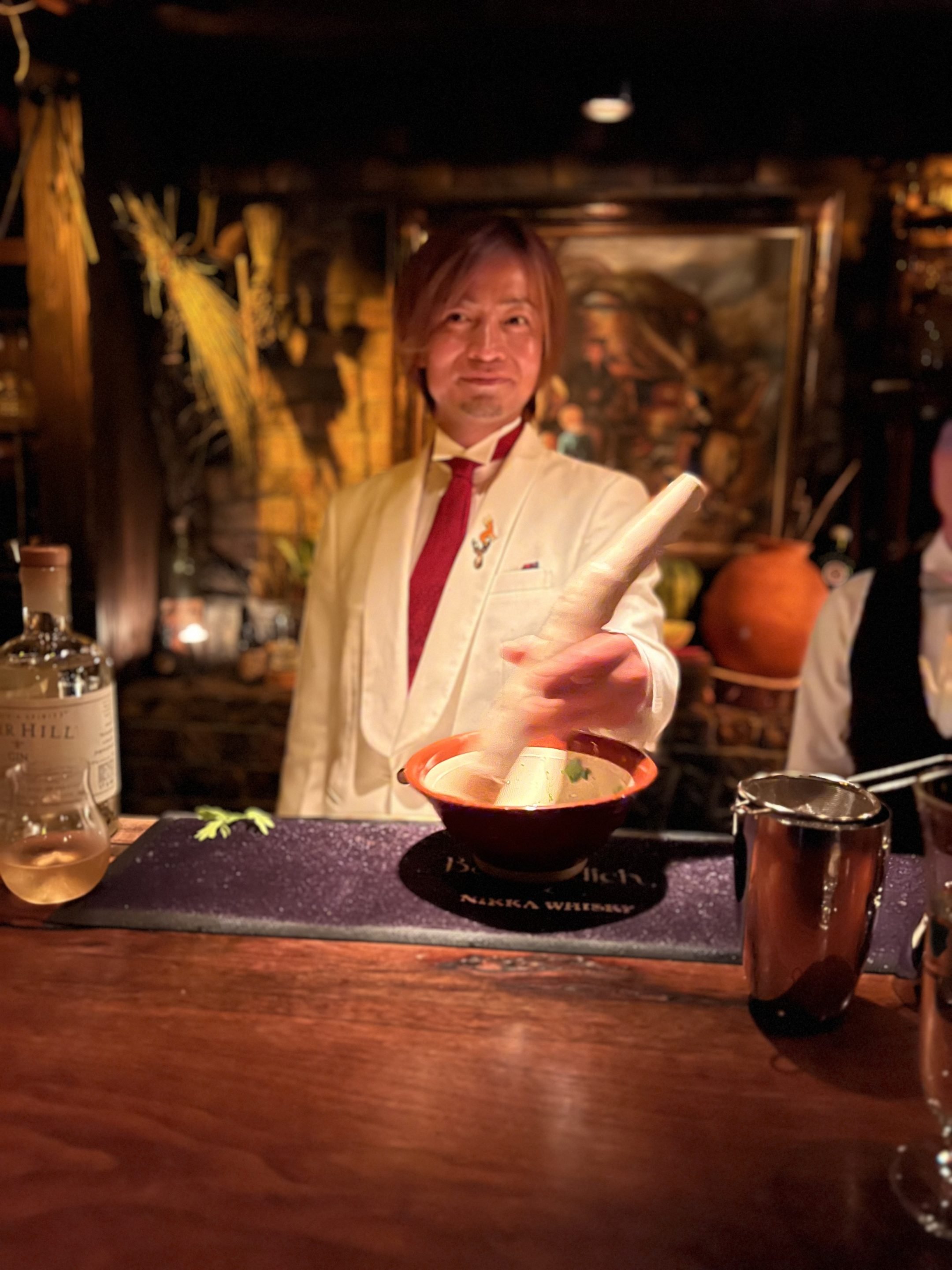
Foraging botanicals more your speed? Schedule time to visit Bar Benfiddich and let Hiroyasu-San take you on a journey. A farmer first and bartender second, the botanicals for the cocktails and the special sticks used for stirring all come from his farm. The glassware is specially made for him and he even kiln fires special ceramic vessels for use in the bar. Yes, the classics are great here but please put yourself in Hiro-San’s capable hands and try his more adventurous cocktails and his special spirits.
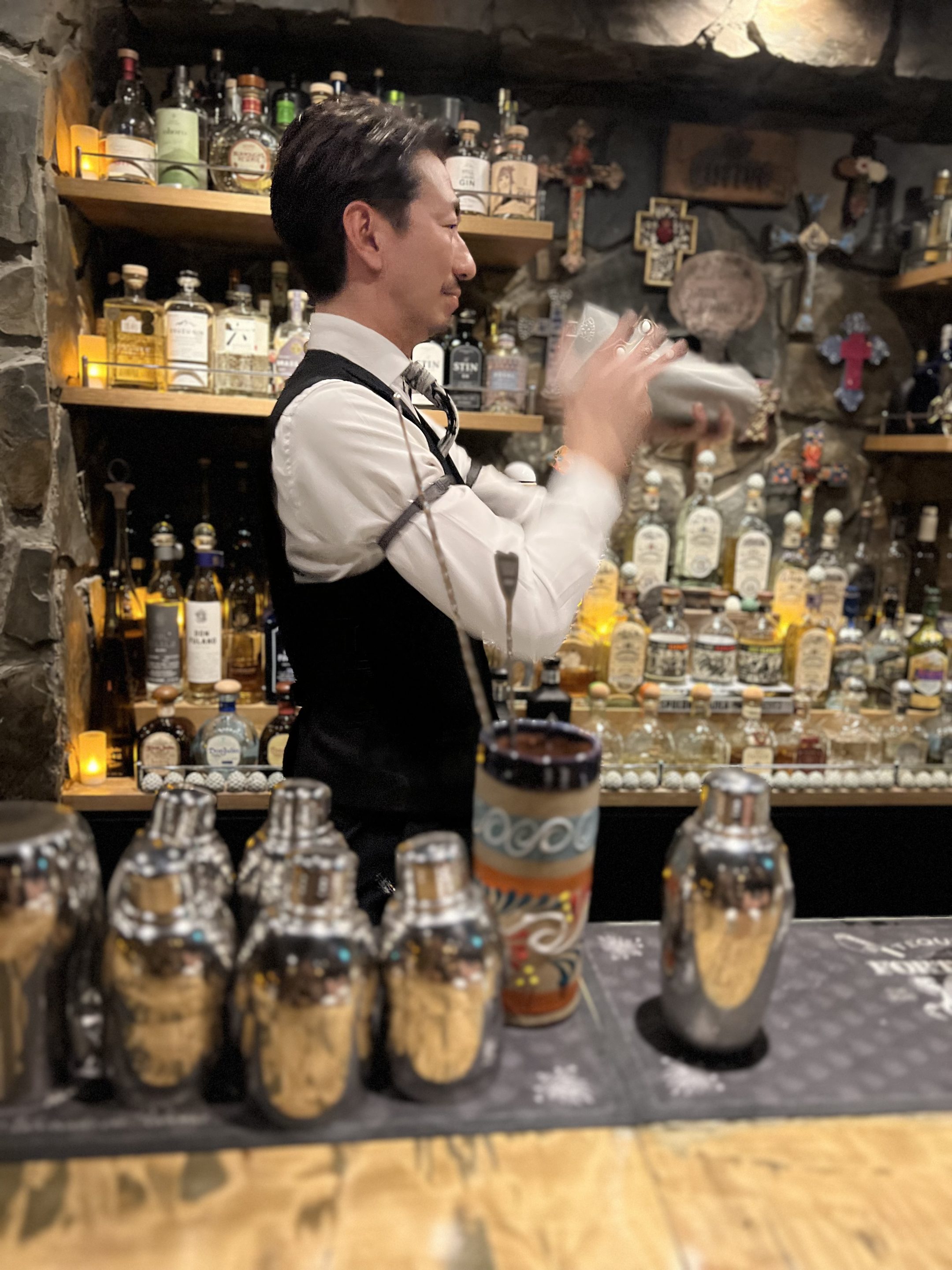
After you finish at Bar Benfiddich, head upstairs to Bar Sunface. Neither bar has a printed menu, so have a chat with Koji-San about your preferences. If you aren’t comfortable communicating in Japanese, he speaks some English and a little Spanish, which makes sense as his agave selection is on point. I had a delicious mezcal cocktail and a lot of fun conversing in three languages about all things tequila (he was the first ever Don of Tequila and has won many agave focused awards and competitons).
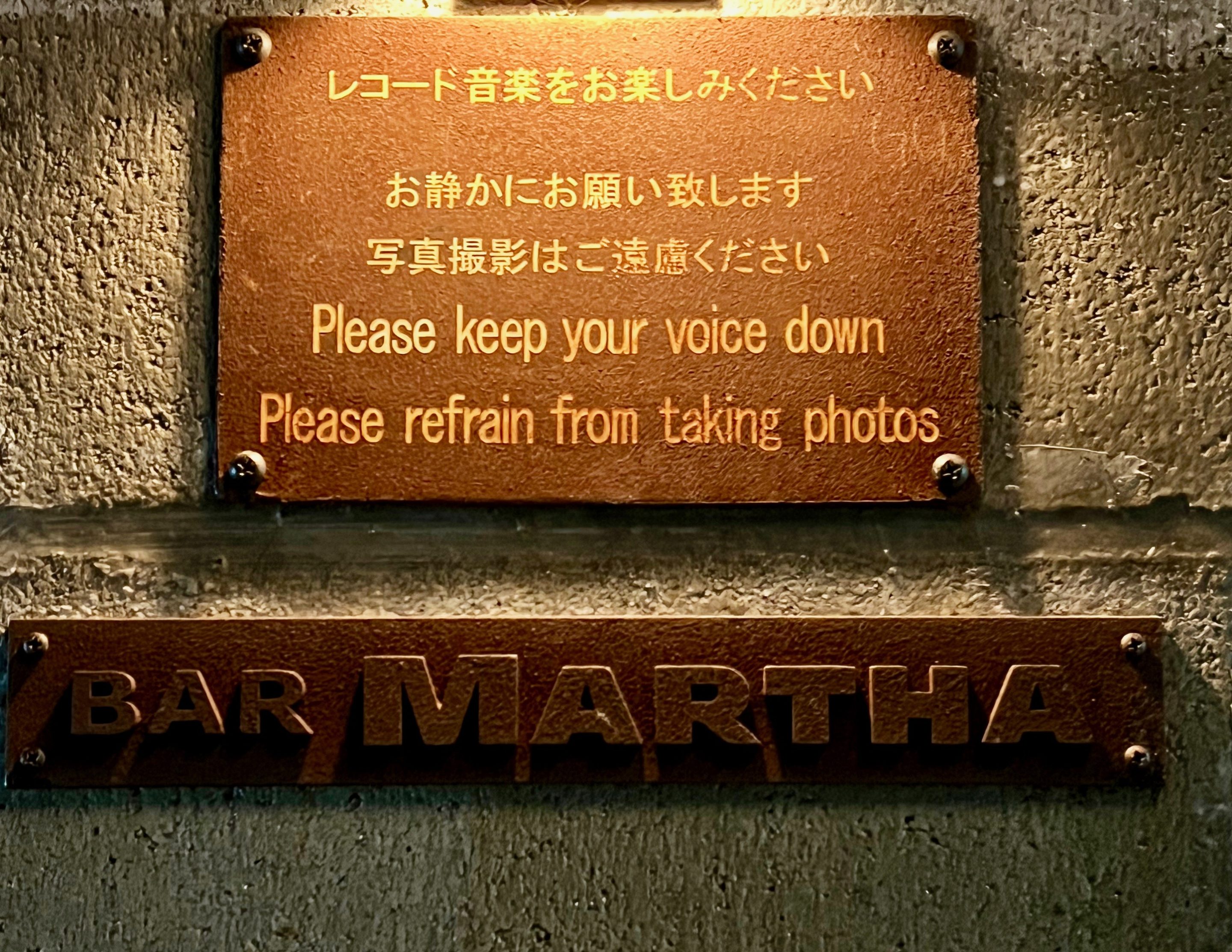
Looking for all things whisky and whiskey? Check out Bar Martha for a great whisky list while being mindful that this is a listening bar, go to sip your dram and listen to the vinyl. Or head to a little spot in Roppongi and don’t be fooled by the bar’s name, Wodka Tonic is a whisky bar and boy do they have a lot of it!
The northernmost prefecture of Japan, Hokkaido is known for its volcanos, hot springs, snowy peaks, mind-blowing dairy and seafood, and yep it’s home to one of the biggest Japanese breweries. It also boasts a climate perfect for whisky aging, which is why Masataka Taketsuru, also known as the father of Japanese whisky, chose it for his distillery (more on that later). The bar scene in Sapporo is not to be missed.
Ever wondered what spirits and cocktails would taste like if they were aged at the bottom of the ocean? Well if that thought didn’t cross your mind before, I bet you’re contemplating it right about now! Bar Ikkei, owned and operated by Ikkei Honma, boasts a stellar back bar, some bottles of which Ikkei-San has had sealed with wax and left on the ocean floor for a year and change. I recommend doing a side by side tasting of the original spirit and the ocean aged version. My favorite ocean aged option was the gin martini–it was beautiful and delicate, the edges of the gin mellowed by the vibrations of the ocean.
Saito Hisatsugu opened Bar Owl & Rooster in 2020, upon returning to his hometown after working under Rodgerio-San at Bar Trench. Watching Saito-San craft cocktails is akin to watching a ballet, this cozy little bar is full of rare bottles–we all fell in love with it. The cocktails are inventive and he introduced me to Hokkaido cream; I will never be the same.
We made an unplanned detour to Bar Nano, very tiny and dark with a fabulous spirits list and fun libations. What struck me the most, however, is that the night we went, every member of the staff was female. Up to that point I had indeed seen women behind the bars we had visited, but never more than one at a time.
Sweat It Out
After all of the amazing Japanese beer, whisky, and cocktails, take a little time detox and reset at on onsen or hot spring bath. They are scattered all over the country as a result of geothermal activity, each region features a unique mineral makeup but the rules and etiquette are pretty universal. I spent a weekend in the mountain region near Nikko called Kawaji, an area known for its squash, rivers, and onsen. The resort was phenomenal, getting there was quite the journey and, for most of the trip and my stay, I was the only Gaijin. My hotel in Kyoto also had an onsen and burned the most amazing incense in the lobby. I happen to have several tattoos and purchased special covers ahead of time as it is a big no-no to be tattooed in a public bath. If you are too tatted up for covers or don’t relish the thought of being naked around strangers, book a private onsen.
Whisky
Here we are folks, the reason I came to Japan in the first place. Wait, didn’t I say I came for the Japanese beer? Well hey, whisky starts as beer so potayto potahhtoh (but that’s vodka) I digress…
In 2019 I became the first American and third woman to place in the Nikka Perfect Serve Global Competition. This prize trip was four years in the making for Asteris Psarras and I, due to shutdown, and we were joined by last year’s winners, Daniele Salviato and Honza Vlasák. Traveling with other craft spirits nerds is seriously where it’s at!
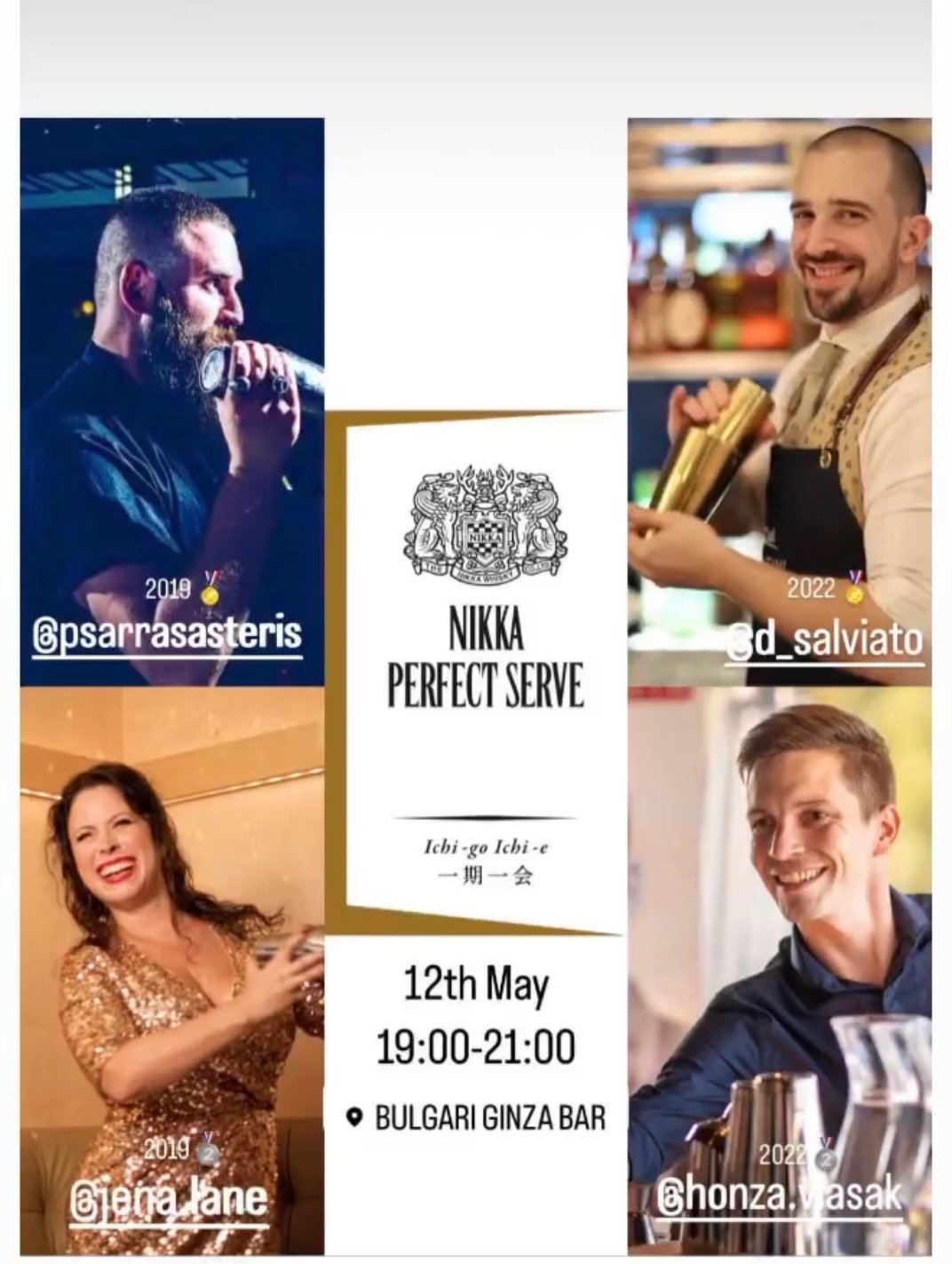
A little Japanese whisky history: the man referred to as the “father of Japanese whisky” began as a student of fermented food. The son of a sake brewer, Masataka Taketsuro eventually traveled to Scotland to study the art of whisky distillation, spending time in California to learn wine production on the way. He returned to Japan in 1920 with his wife, Rita, who he met and married in Scotland. Masataka became the first distiller for the Yamazaki, later leaving to open the first Nikka distillery in Hokkaido in 1934. In 1969, his second distillery, Miyagikyo, opened in Sendai.
The gents and I were lucky enough to tour both distilleries and be part of a special whisky blending session with Emiko-San, who has run Nikka since the 1990s! We watched the coal being fed into the fires to heat the pot stills, we smelled the peat, touched the water sources, saw the Coffey Stills, I even got to push the button to char the barrels!
Other Japanese Craft Spirits
Shohei Tatsumi, the sole proprietor of Tatsumi Distillery, is my top choice for craft distiller,” shares Yas-San, “Located in a remote mountain town in Gifu Prefecture, approximately 400 kilometers away from Tokyo, he has been distilling since 2017. He produces around 60 varieties of gin (including one infused with water bugs) and absinthe annually. All the processes, including the preparation of botanicals, are done manually, and each brand is produced in small quantities of 200 to 300 bottles.”
I tried Okinowan “Cor Cor” Red (molasses based) and Green (agricole) label rums at Bar High Five and was pretty excited by both. So far I’ve only been able to find the Red in NYC, but that means they are available stateside!
There’s no shortage of shochu producers, I am partial to Mizu (which translates to “water” btw). If you get the chance to do a sake tasting or visit the Sake Museum, go for it! Many bars have their own custom gins, elixirs, and other inventive tipples made just for them by local craft producers, so make sure you try those when you see them!
Want to bring bottles home? The selection at Shinanoya Ginza liquor store was spot on!
Itadakimasu!
It is polite to say this phrase before a meal, so it makes perfect sense to kick off my food section by saying itadakimasu! For everything delicious that I ate and info on where I ate it, check out the video on the right, soundtrack provided by Kieran Dennis!
I didn’t have a single sub-par meal the entire time I was in Japan (and that includes my meals from convenience stores and train stations). Traditional Japanese breakfast is comprised of many small dishes; I’m still dreaming about the breakfasts from Kawaji and Kyoto. However, if fish or a lack of toast weirds you out on the breakfast table, this style might not be your cup of green tea.
Maybe pancakes are your jam? Asteris was on a quest for the ultimate “fluffy cake” and it led us on quite the hunt for the best soufle pancakes in Tokyo. Micasadeco & Cafe was indeed worth the hype, 25 min line and 45 minute wait for the pancakes that lasted all of ten minutes. Asteris was so so happy. They also have great coffee and a Japanese craft beer list!
Want to try everything from everywhere all at once? Hit up the foodcourt at any department store when they open and get it all! Our group split up to brave the lines on our own and reconviened with otoro, dumplings, Japanese strawberries, more fruit (although not the prized musk melon, fruit is crazy pricey), sweets, and all the Nigiri, Maki, and Sashimi we could carry. Our picnic lunch was so good it left us speechless, and one of us may have cried into his otoro.
If street vendors and specialty seafood speaks to you, head to the Tsukiji Market. While the wholesale tuna auctions have been moved to the new Toyosu Market, if you want to actually try the seafood instead of watching from afar as chefs haggle over it, Tsukiji is where it’s at! There are also sake vendors and you can do a whole sake flight of various styes. Bring cash and water and wear sunscreen. You will wait in line, get over it.
Follow the rules: NO EATING AND WALKING
The Nishiki Market in Kyoto is also delicious and a great way to spend a day. If you’d rather be indoors, the Kyoto train station tenth floor has a so-called “noodle theme park” of restaurants dedicated to ramen styles from each prefecture. Don’t forget to slurp those noodles!
One of the most surprising meals in Japan was on the side of a mountain road in Sendai at a little vegetarian spot called : L’Albero. The choice of a restaurant highlighting vegetables wasn’t the surprise, Japanese produce is stellar, rather all of us were amazed that we were about to have pizza in Asia.
An Italian and a New Yorker walk into a pizza joint in Japan, the joke writes itself.
Except it wasn’t a joke, both of us had our minds blown by the pies. And you know what goes great with pizza? Japanese beer!
After your meal, it’s polite to say “gochisousamadeshita” to your hosts, the staff, and the chef. The phrase gives thanks to all the elements and hands that went into making the meal, from the famers to the servers to those you shared it with. Food is to be enjoyed and respected in Japan, I, for one, think that’s pretty darn cool.
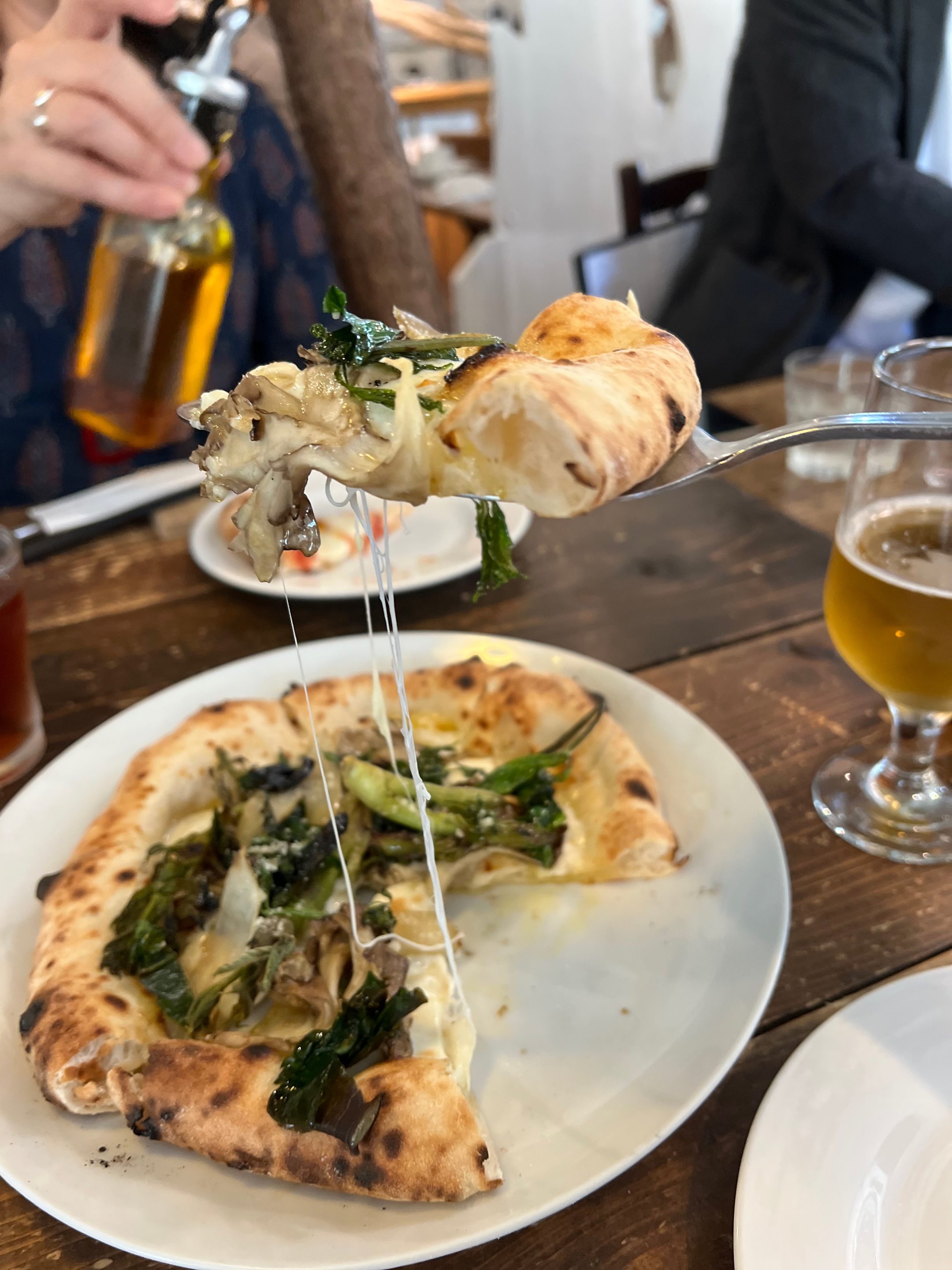
Temples, Shrines, Gardens, Glassware and Steel
There are Temples and Shrines galore in Japan and there are respectful rituals to go with both. Due to my schedule, I chose to visit the ones that were easiest to get to and had the shortest commute, which sadly meant the Cat Temple and Bamboo Forest were out. The Shosei-en Garden in Kyoto is right around the corner from the Higashi Hongan-ji Temple, a beautiful and historic Buddhist temple. Be mindful that this and all temples and shrines are places of prayer and meditation and some require you to remove your shoes. I went for part of a service after taking a stroll through the gardens and left feeling very grounded and peaceful.
Tokyo’s oldest Buddhist temple, Senso-ji, is visually striking and surrounded by shops and vendors. It is also full of tourists. There were some pockets of calm, but it is a pretty crowded place.
Perhaps you’d prefer to worship at a different altar? Around the corner is a little shop packed to the gills with custom glass and barware–walking into Sokichi for any bartender is akin to walking into church. The light glinting off the delicate highball glasses is like angels singing, and the heavenly choir crescendos when the reflections off the blades at Kama-Asa join the chorus. If there’s anything us bar folk love more than glassware, it’s knives.
And yes, I had to buy a third suitcase for all my treasures. I regret nothing.
Arigatou Gozaimasu!
Traveling around the Land of the Rising Sun is something that requires a fair amount of research and guidance, Arigatou gozaimasu to everyone who guided me on my journey: Taeko Ichioka from Mizu Shochu, Emiko Kaji and Daichi Kagawa of Nikka Whisky, Jason Kilgore of Dear Irving, our very own Evan Rothrock, and my college roommate (and Japanese translator) Maya Rosewood. Deepest thanks to Yas-San and Itoh-San for taking the time to chat with me about Japanese craft beer!
What are your favorite places in Japan? Let us know in the comments below! For more travel tips and all things craft alcohol, follow us on Instagram!

Jena is an event host & contributing writer for The Crafty Cask, as well as an award-winning bartender, cocktail educator, Cicerone Certified Beer Server, and Executive American Whiskey Steward. Based in NYC, Jena has been working in the craft alcohol world for the last 15 years with recipes appearing in Manhattan restaurant/bars & multiple publications. She is the 2019 Nikka Perfect Serve Global Runner Up and a 2020 Cognac Connection winner.
